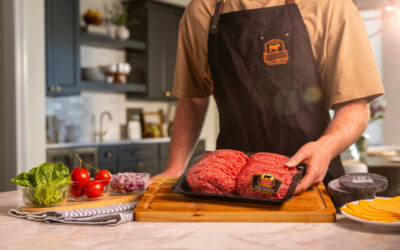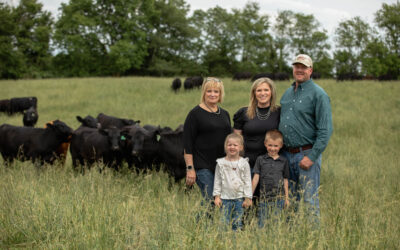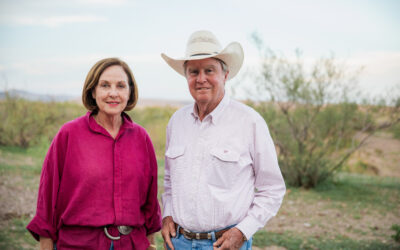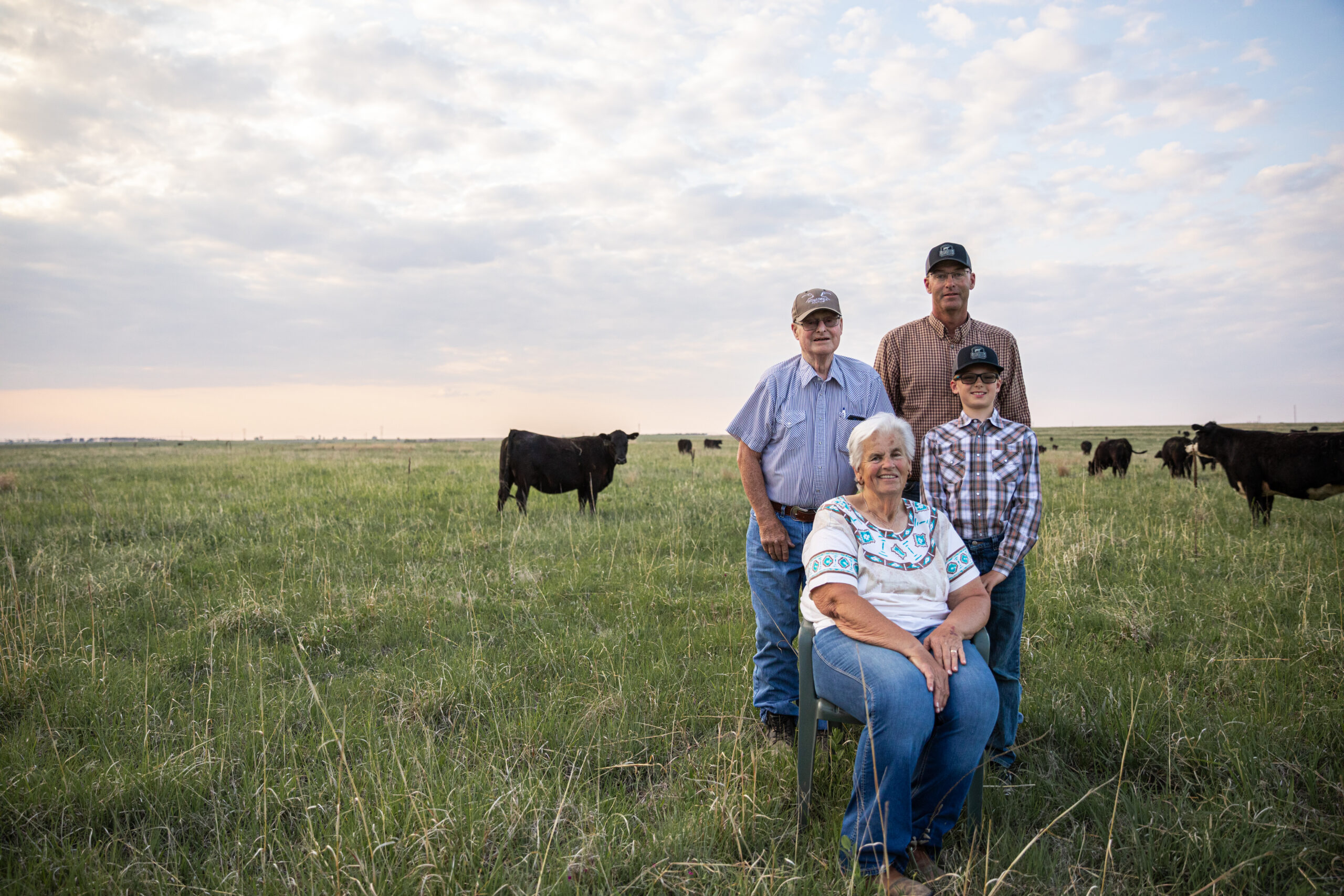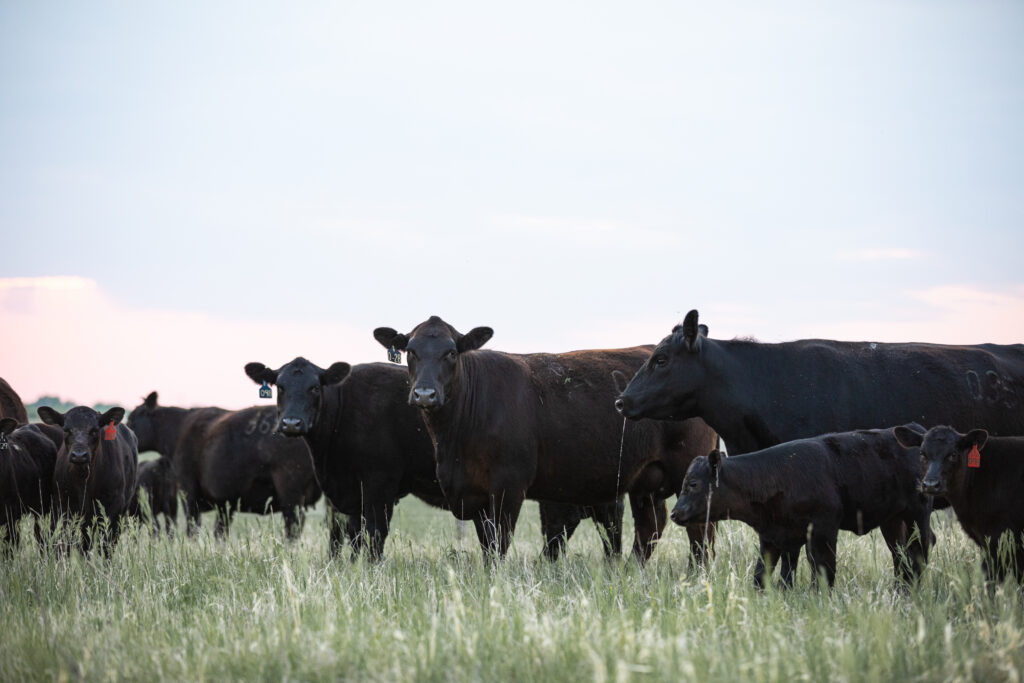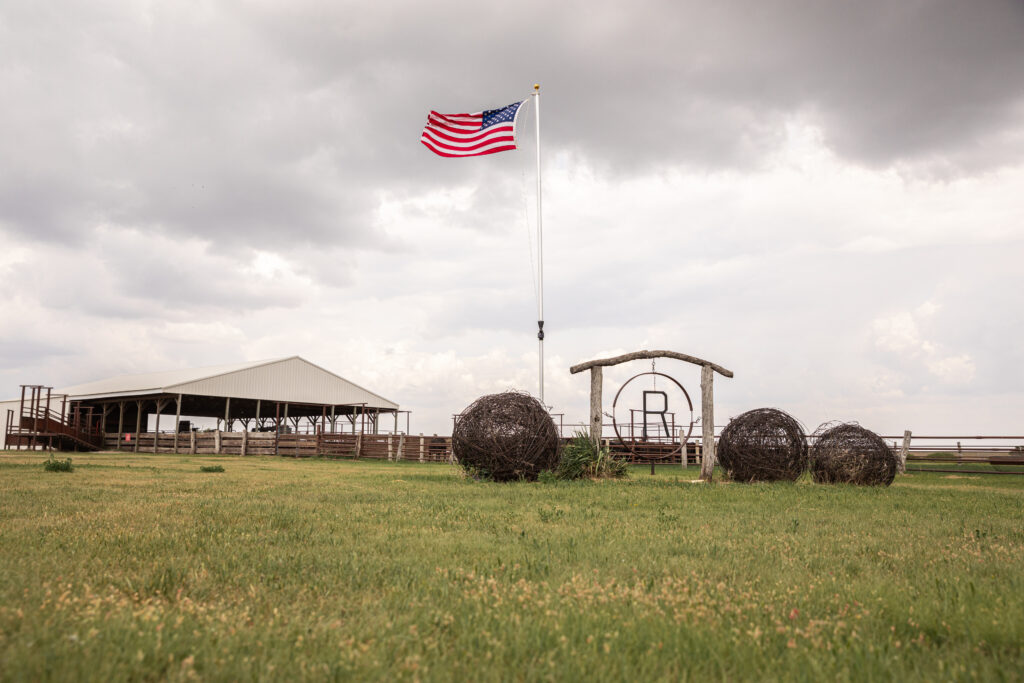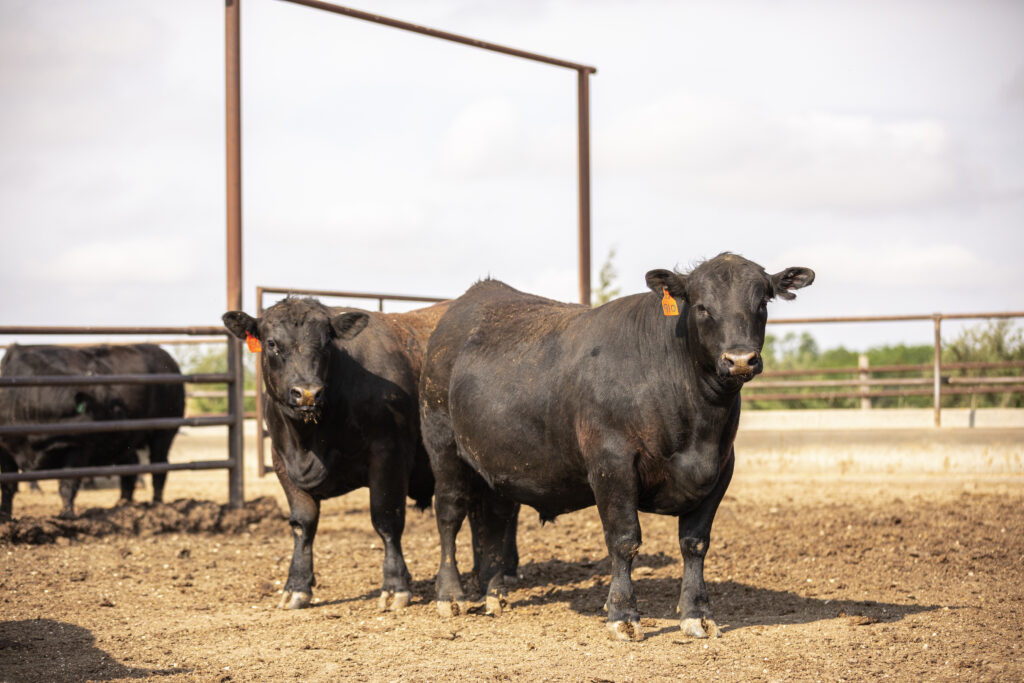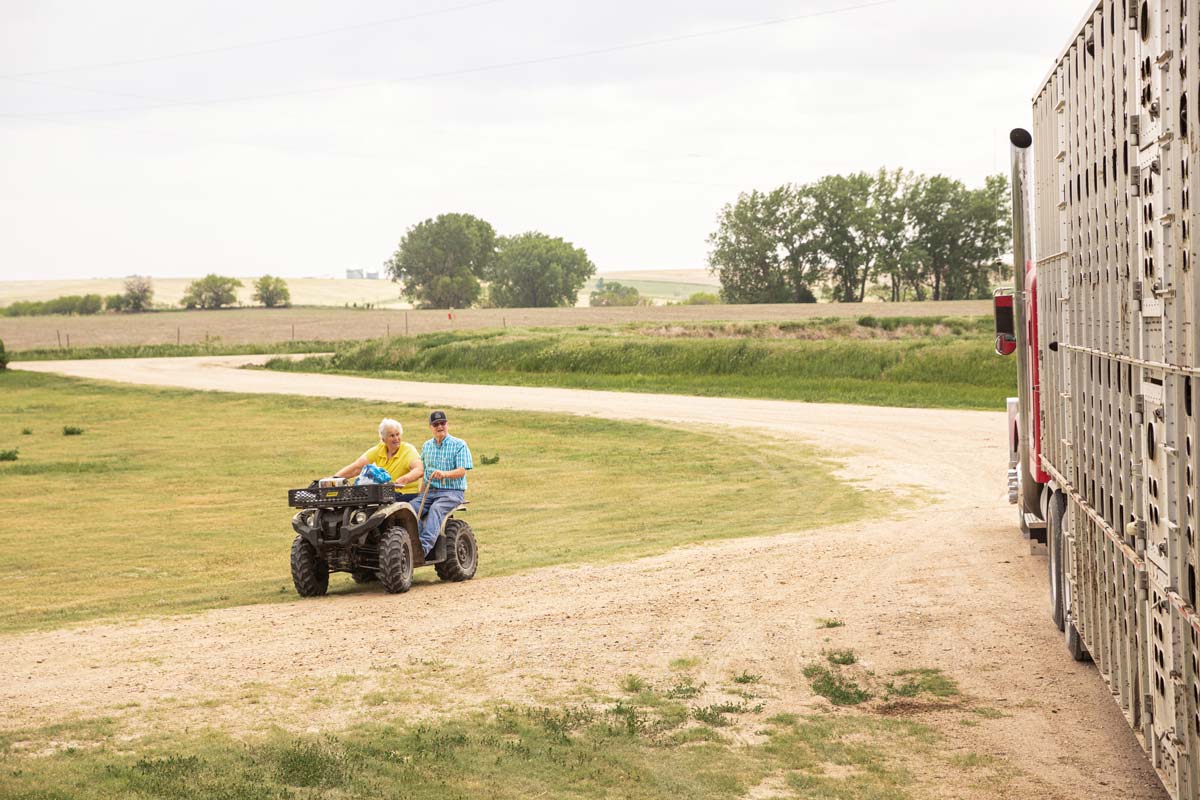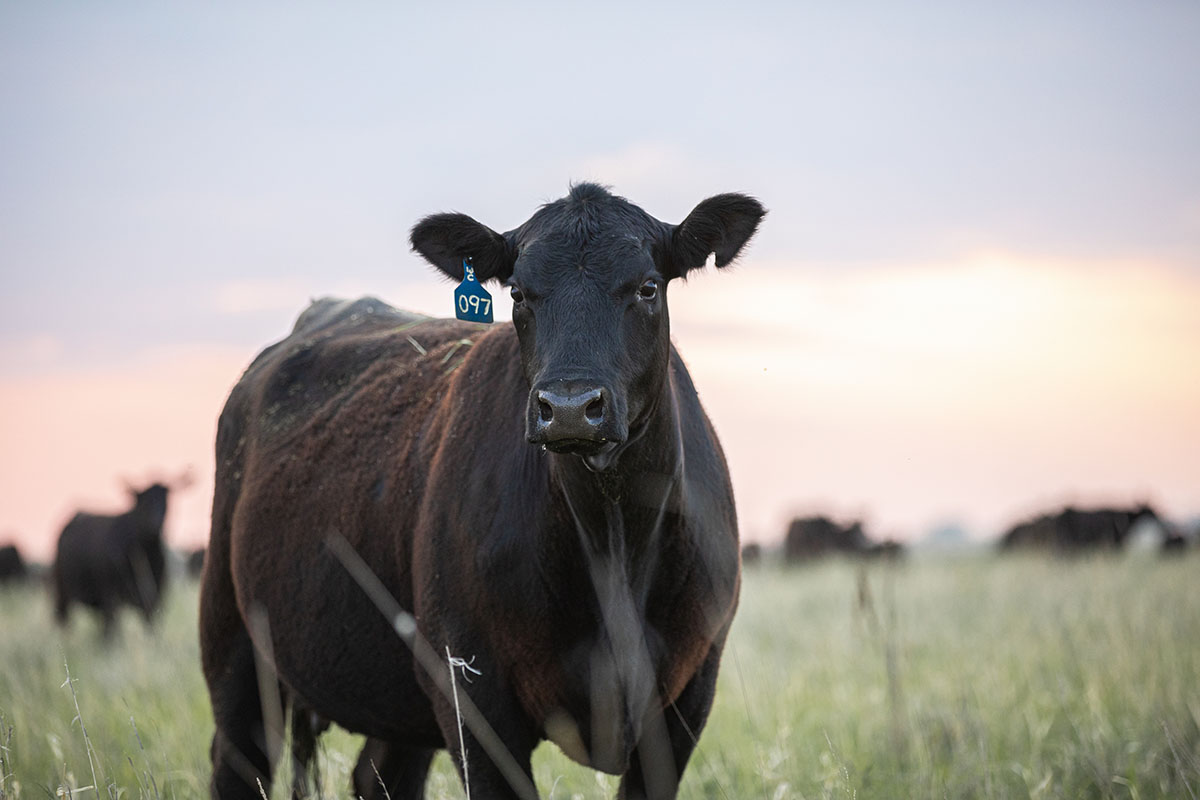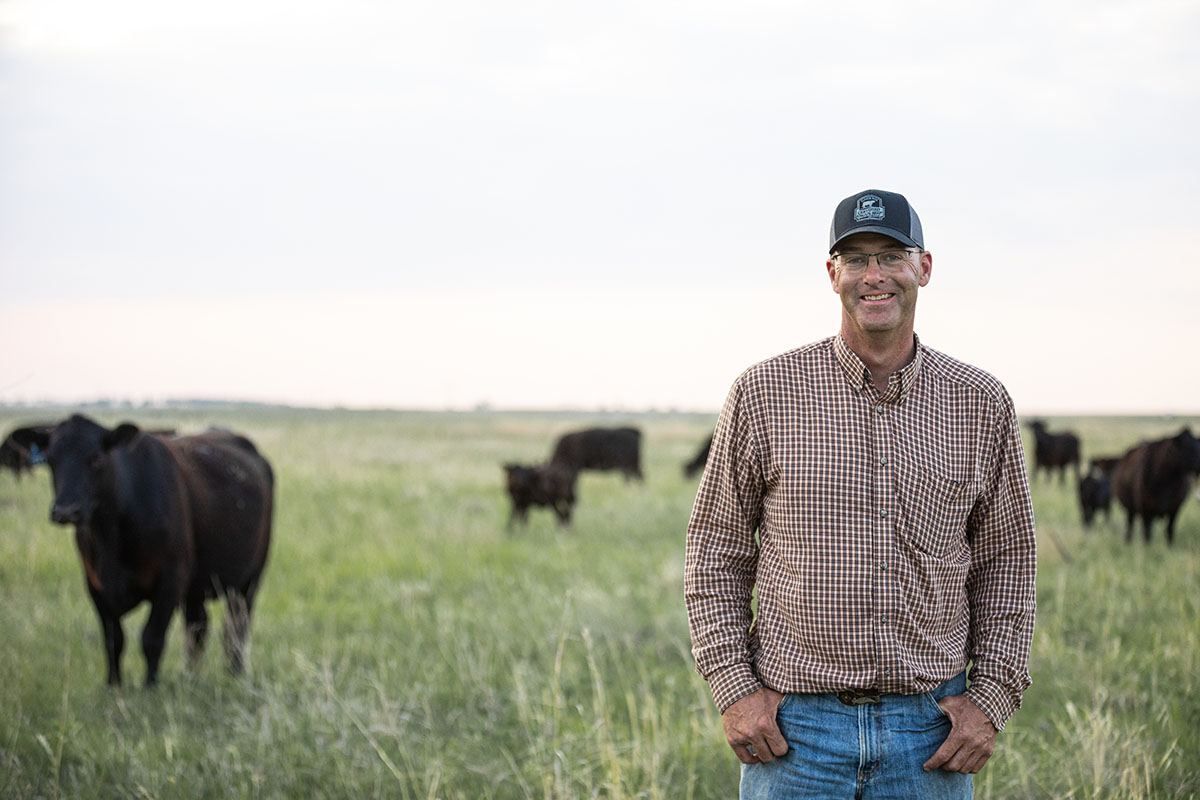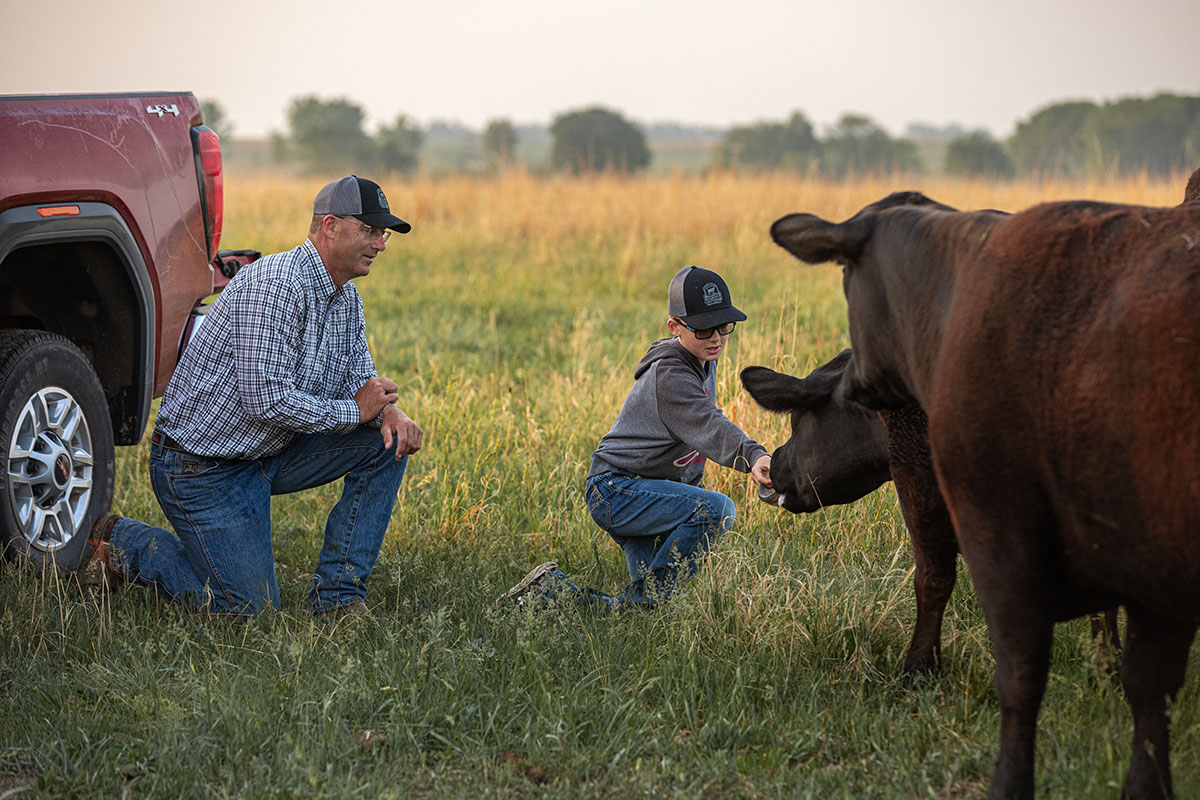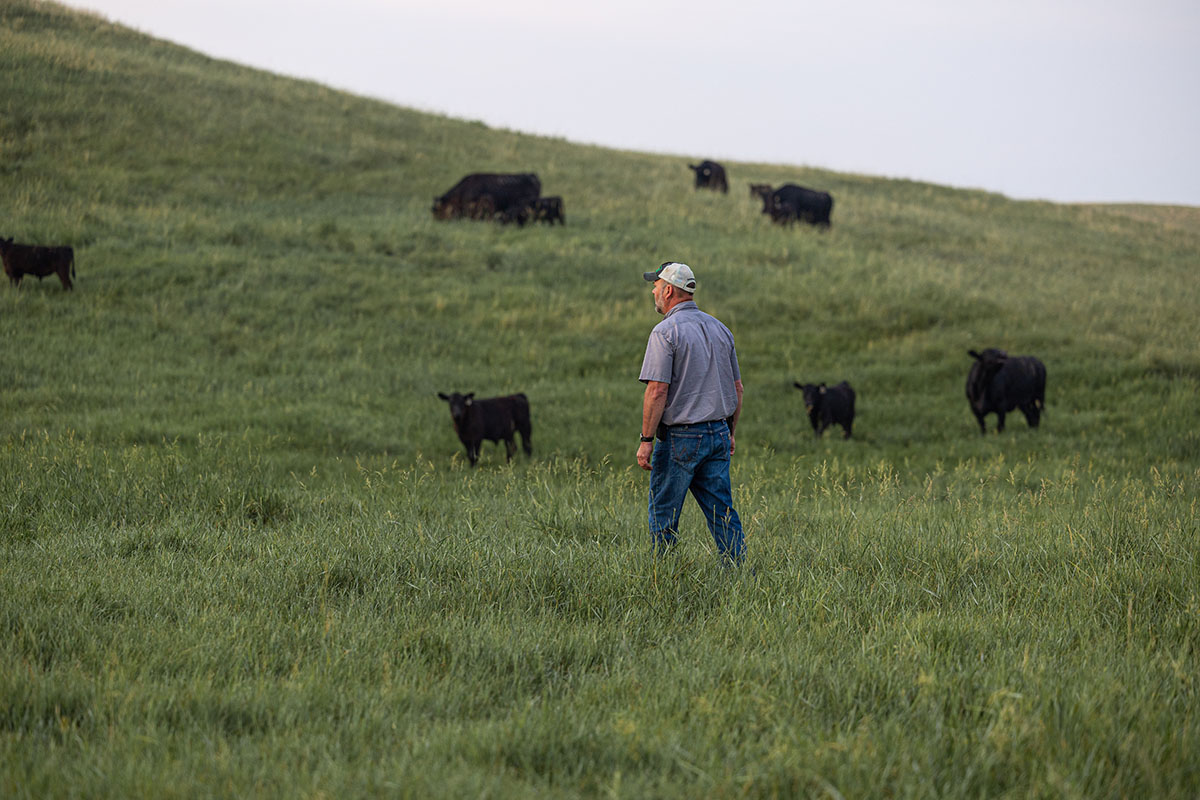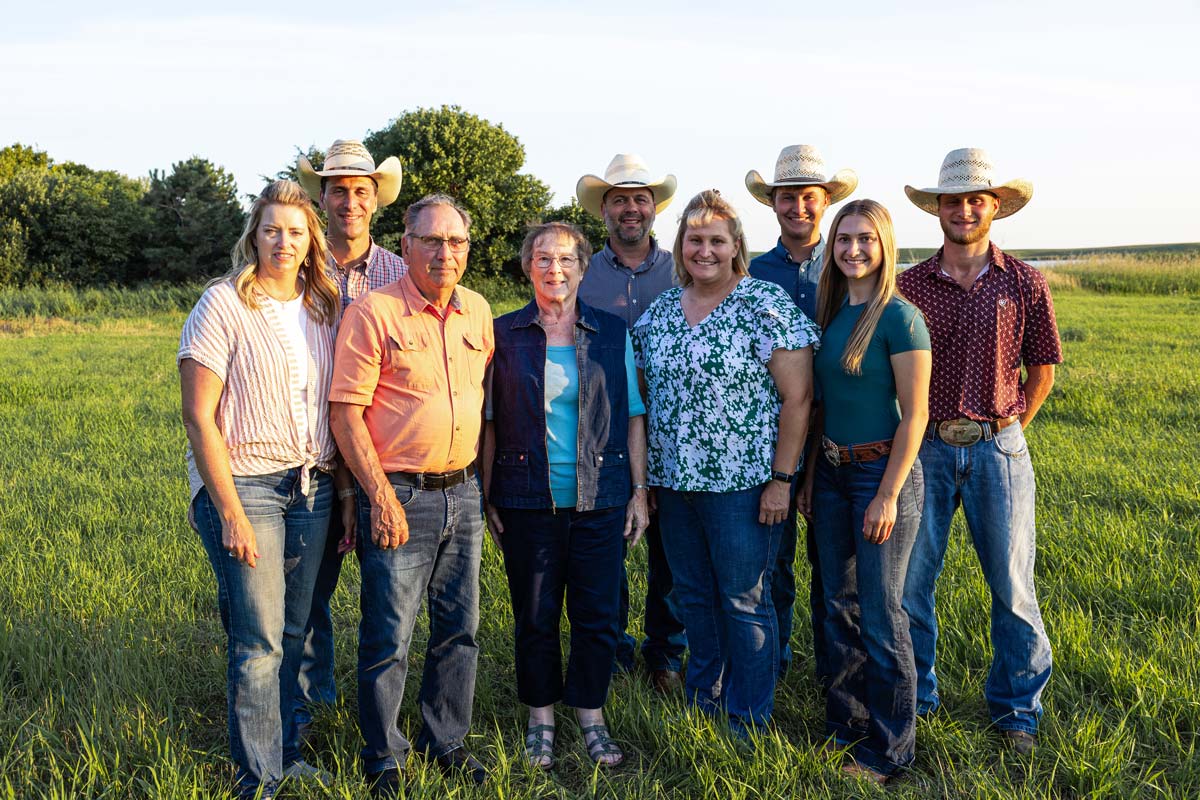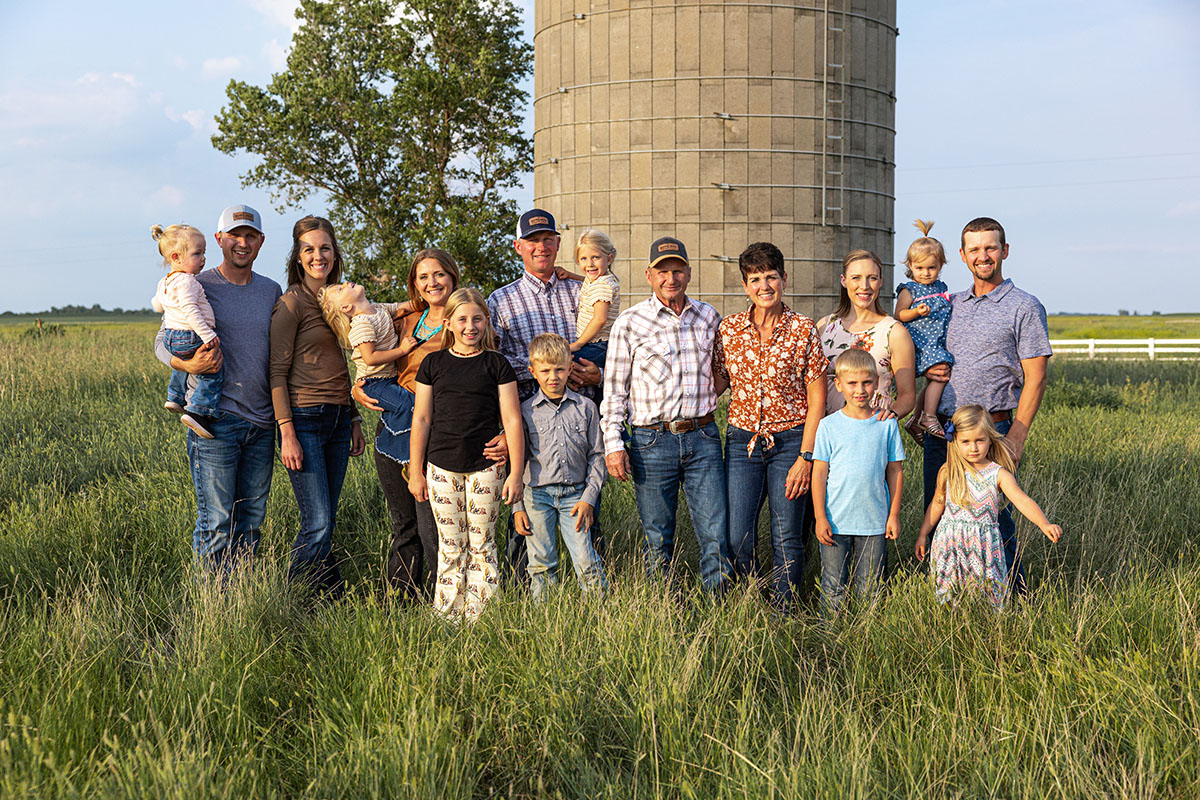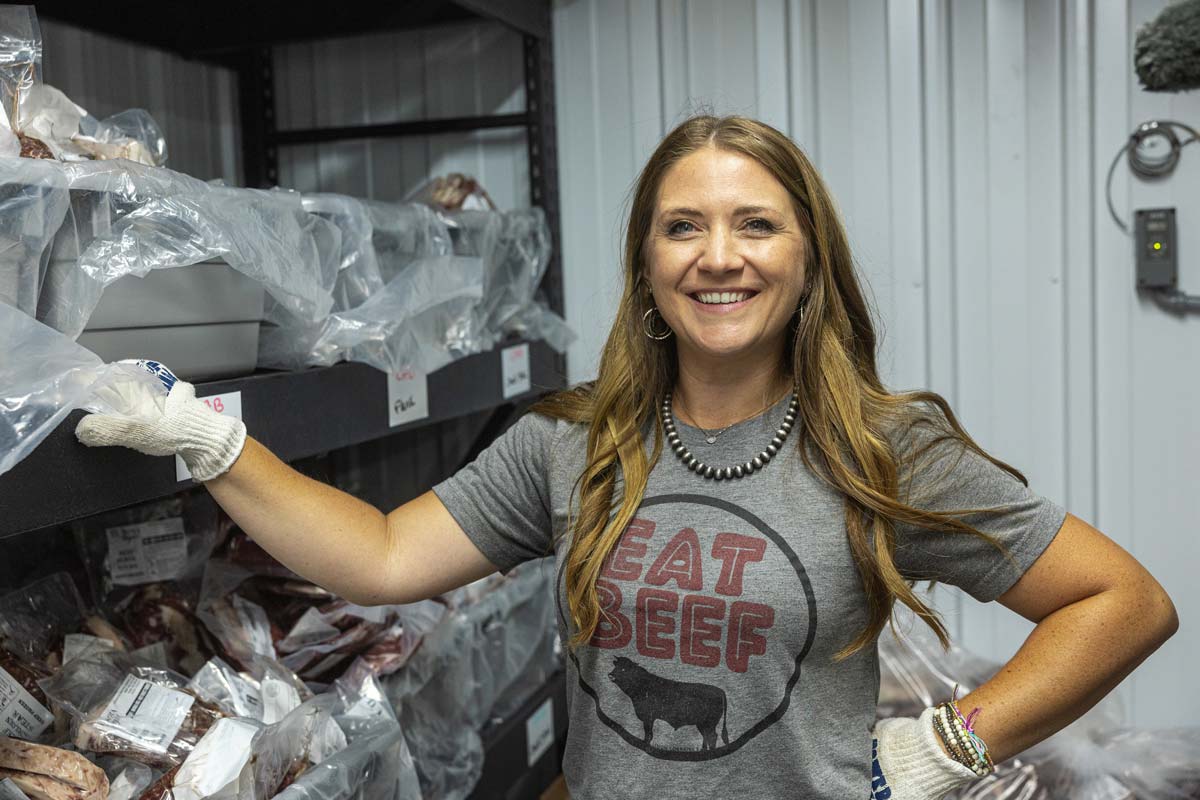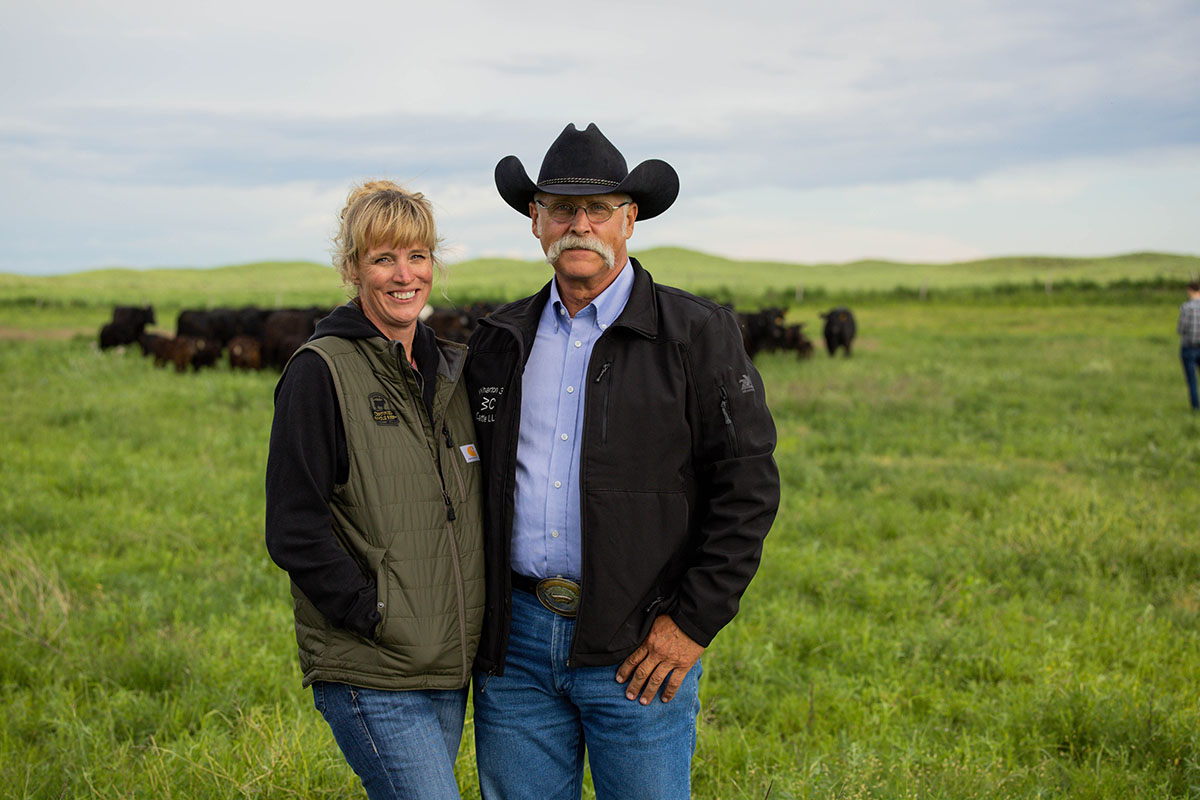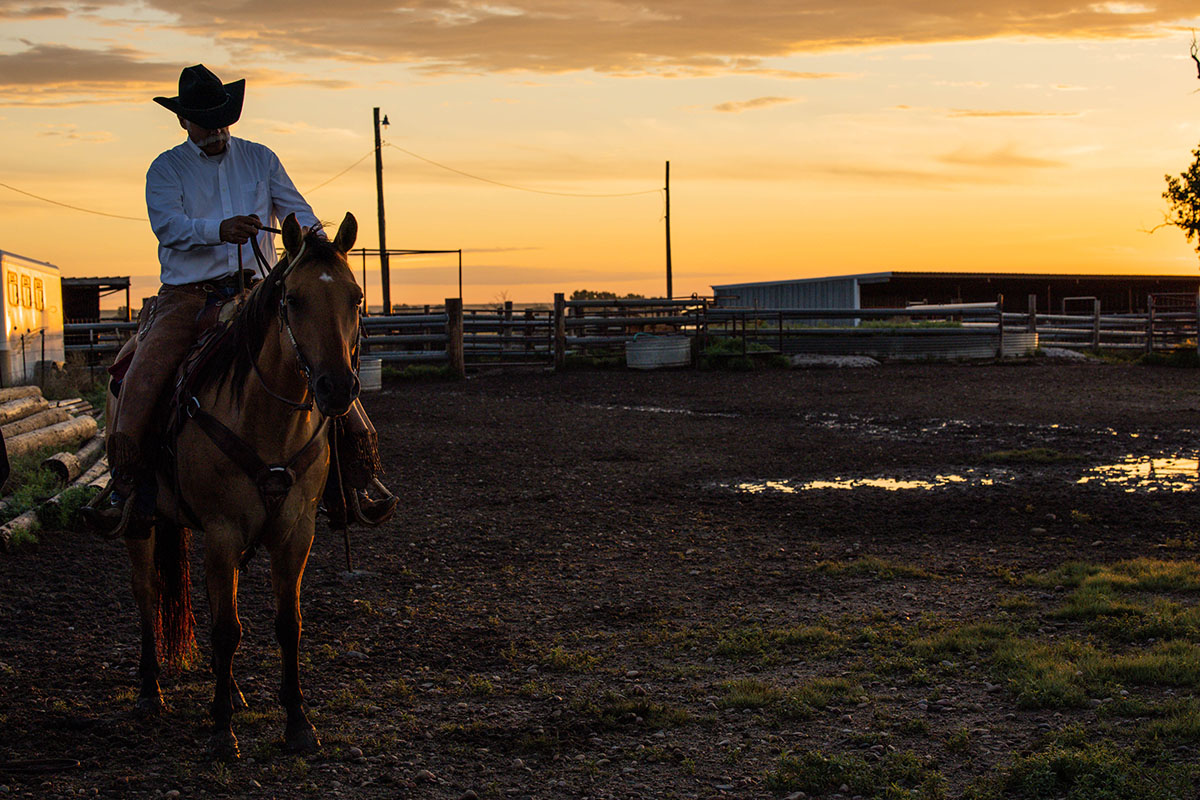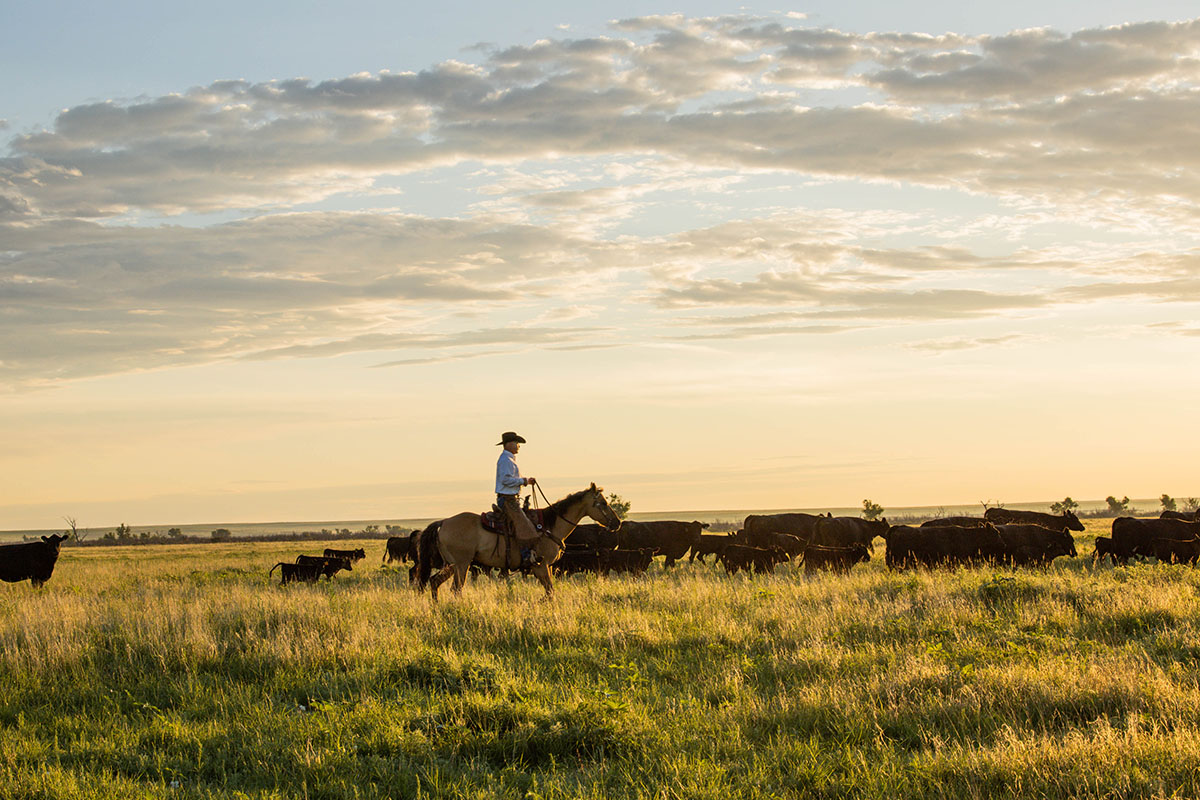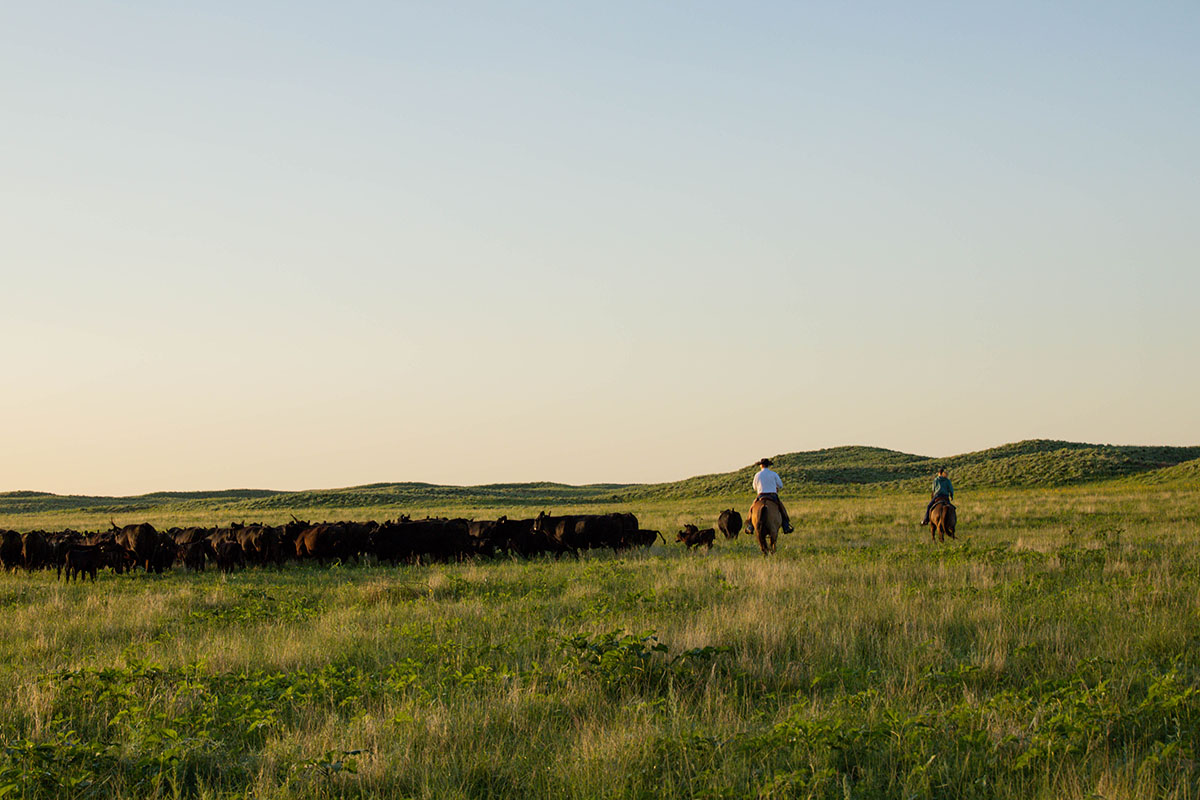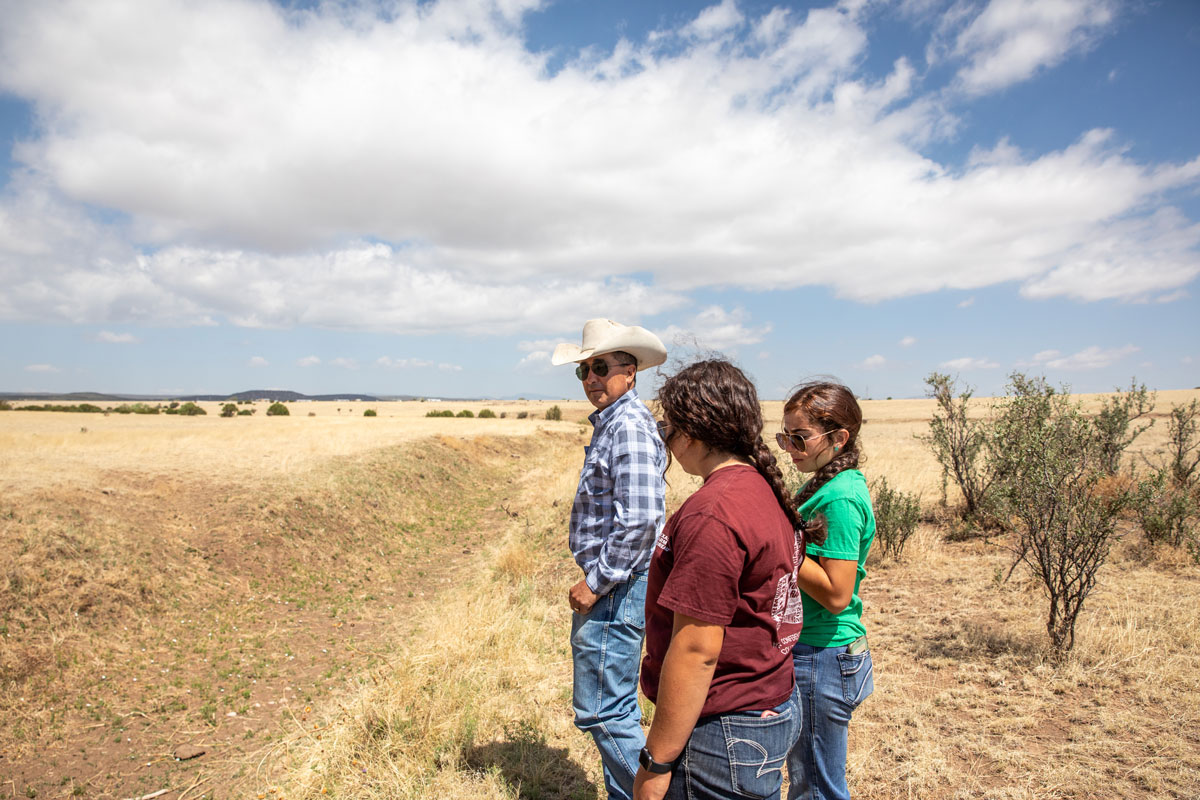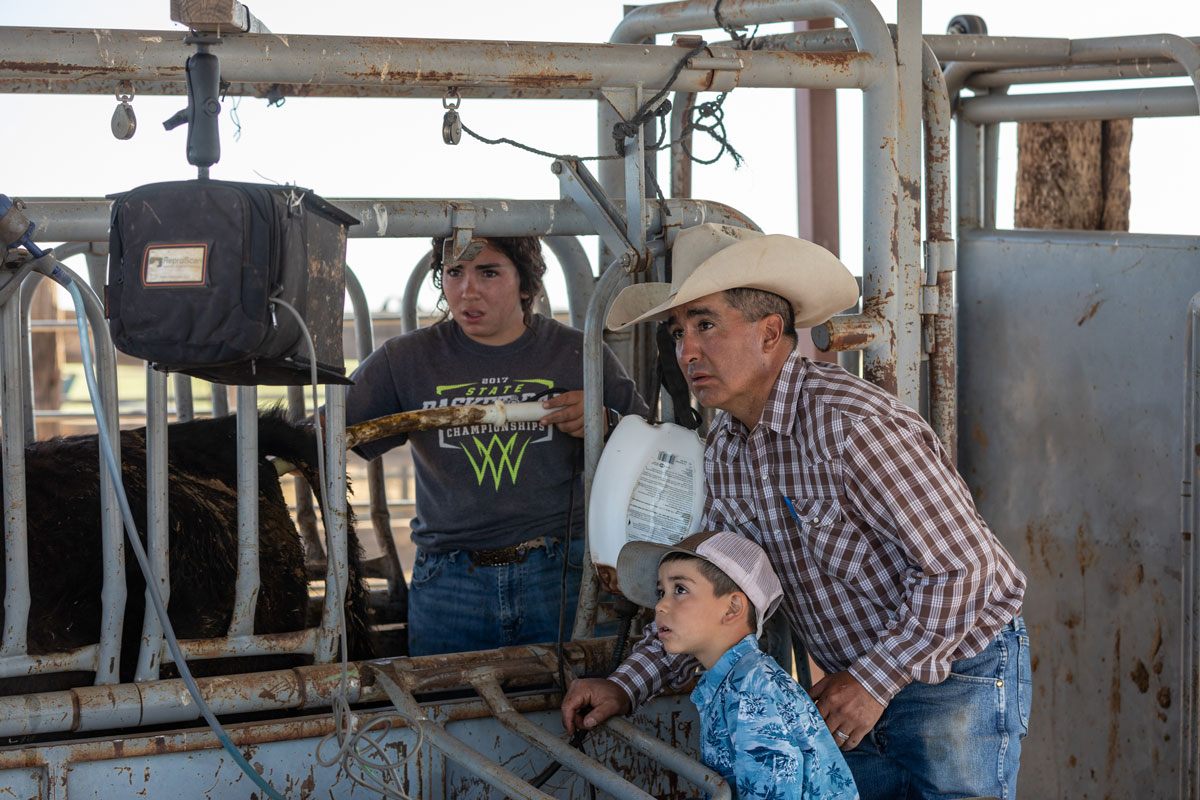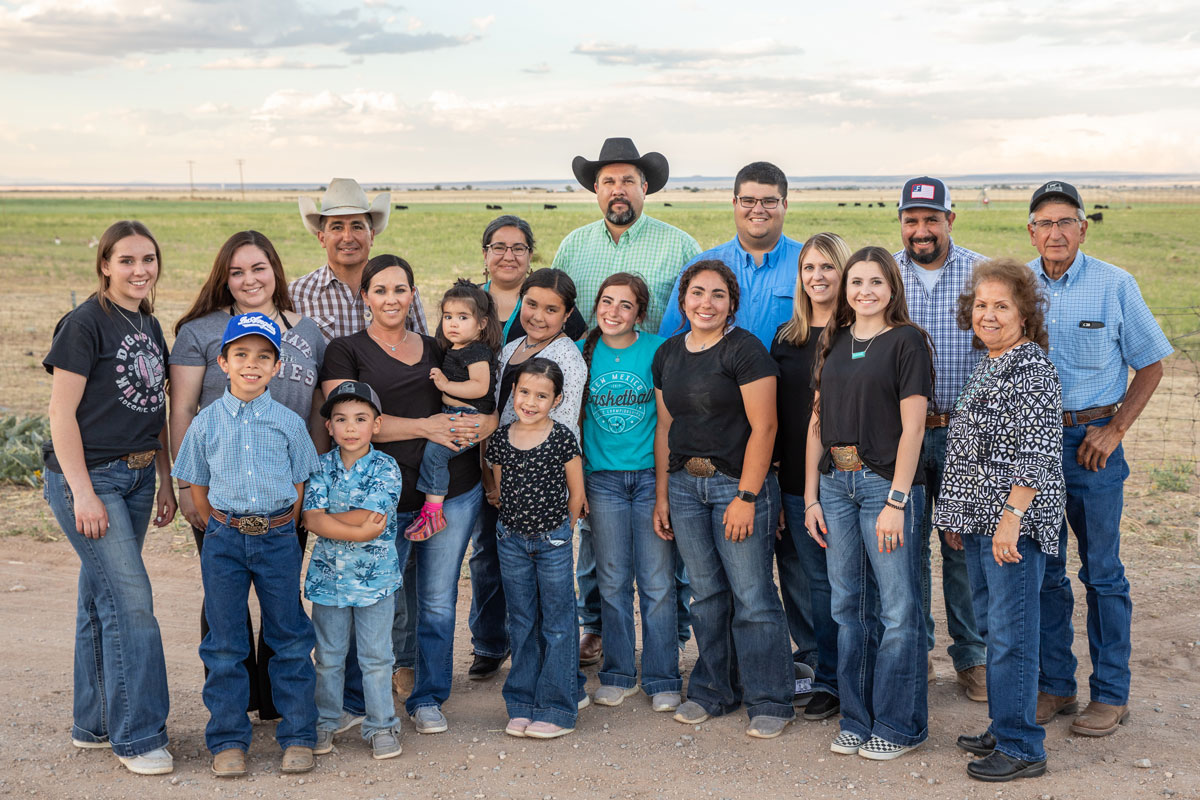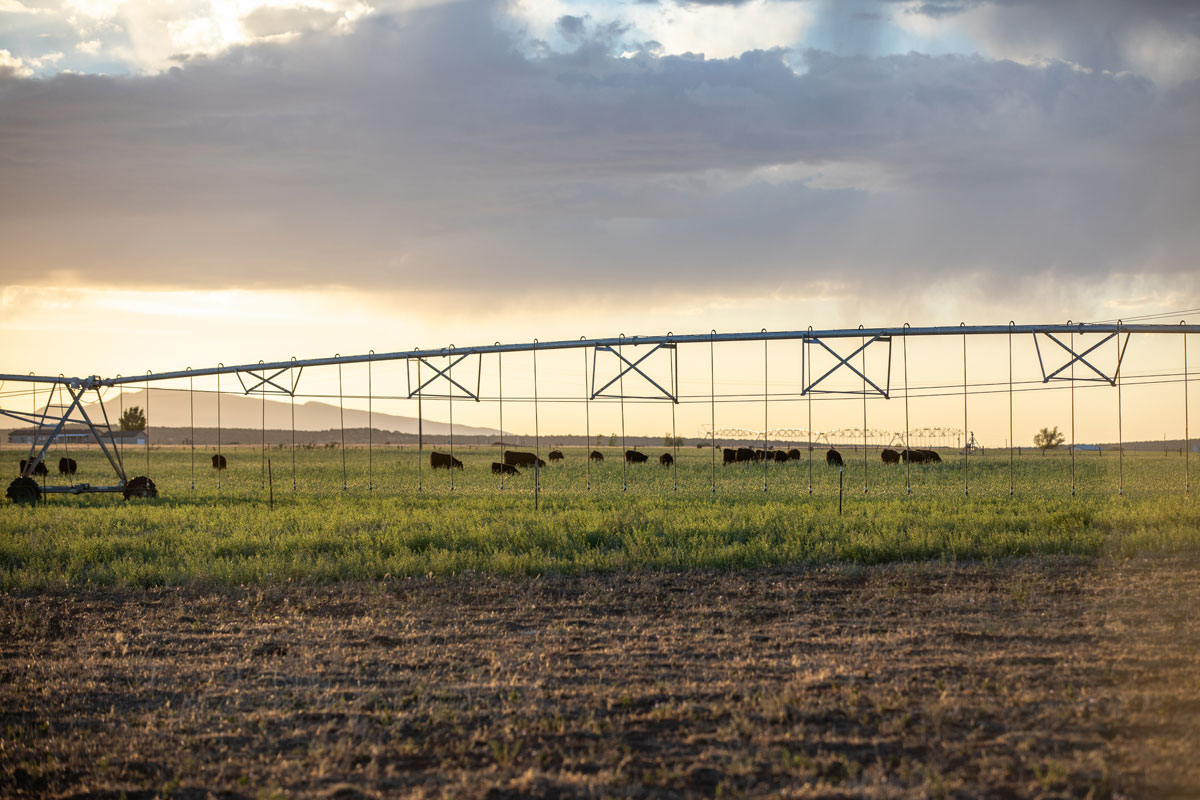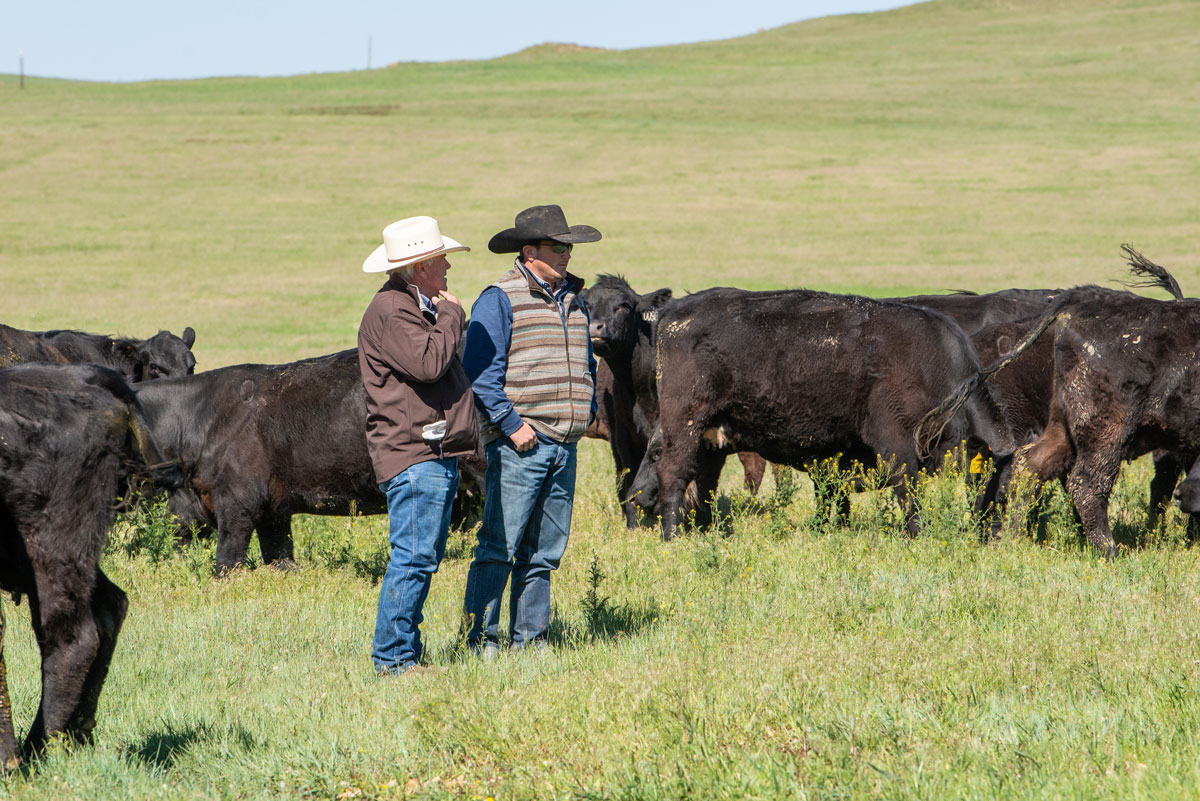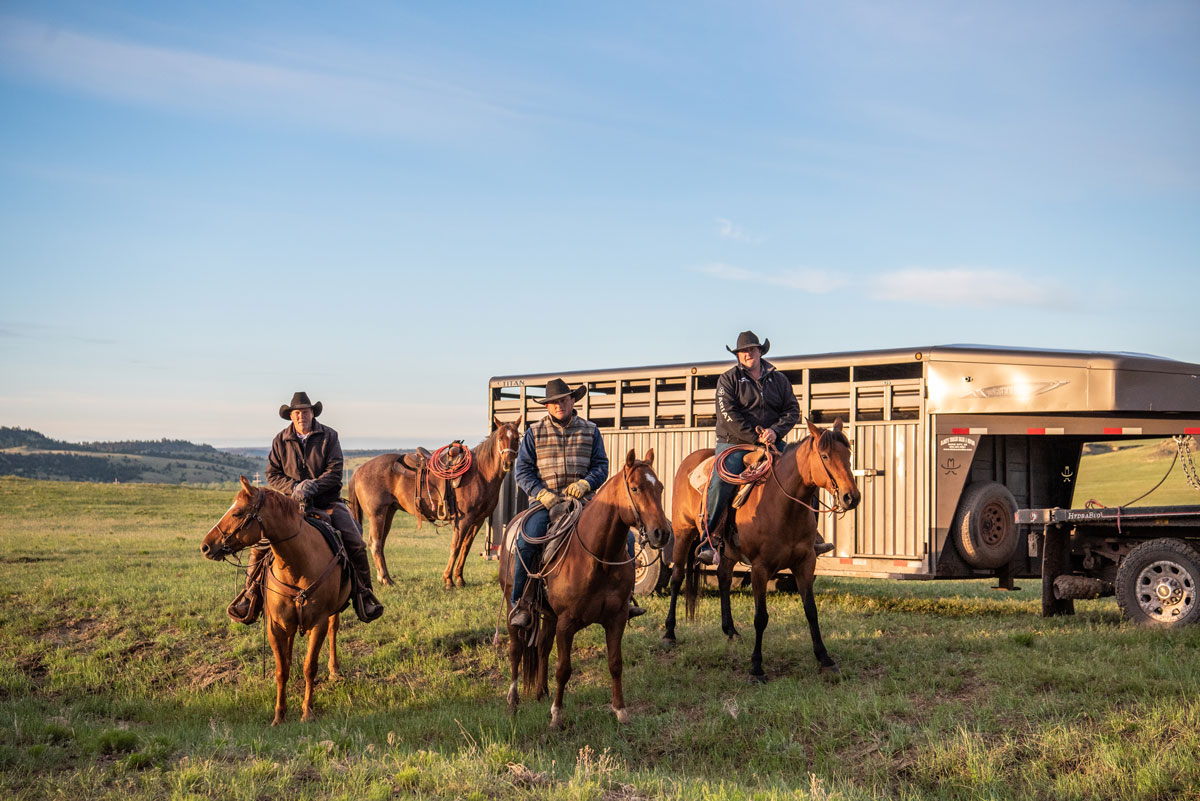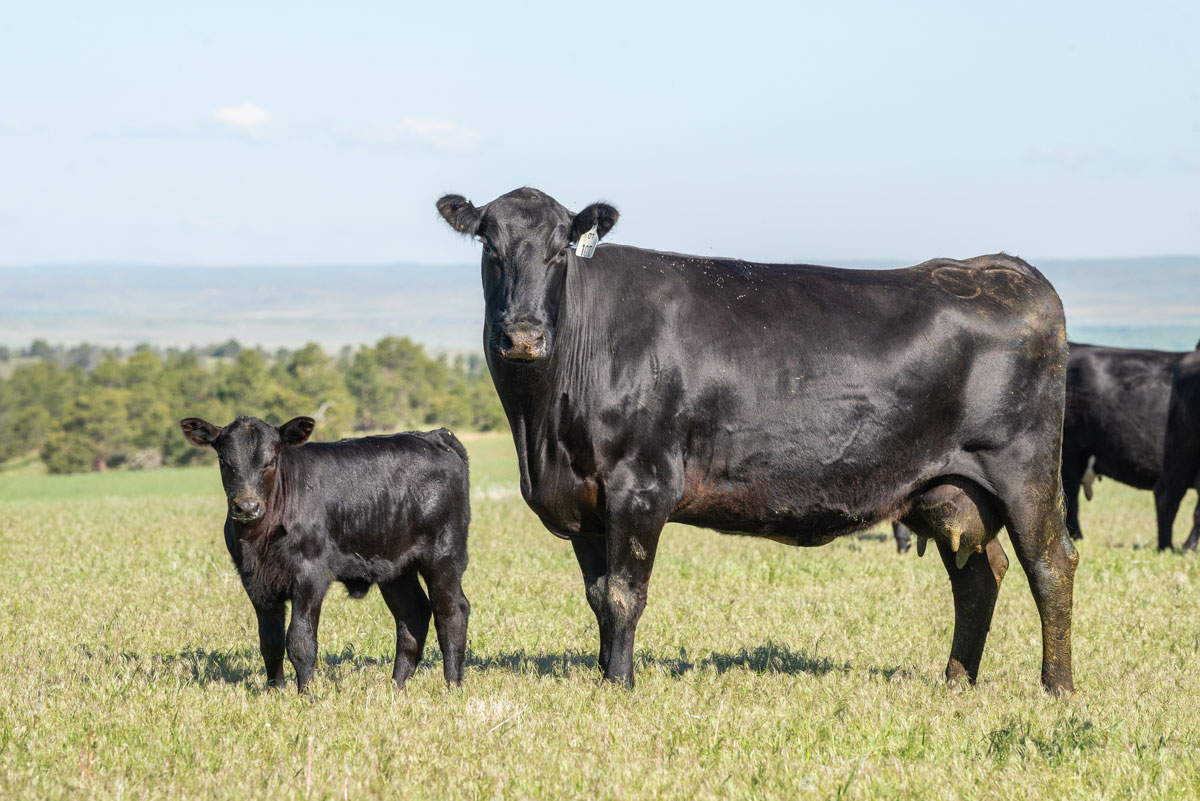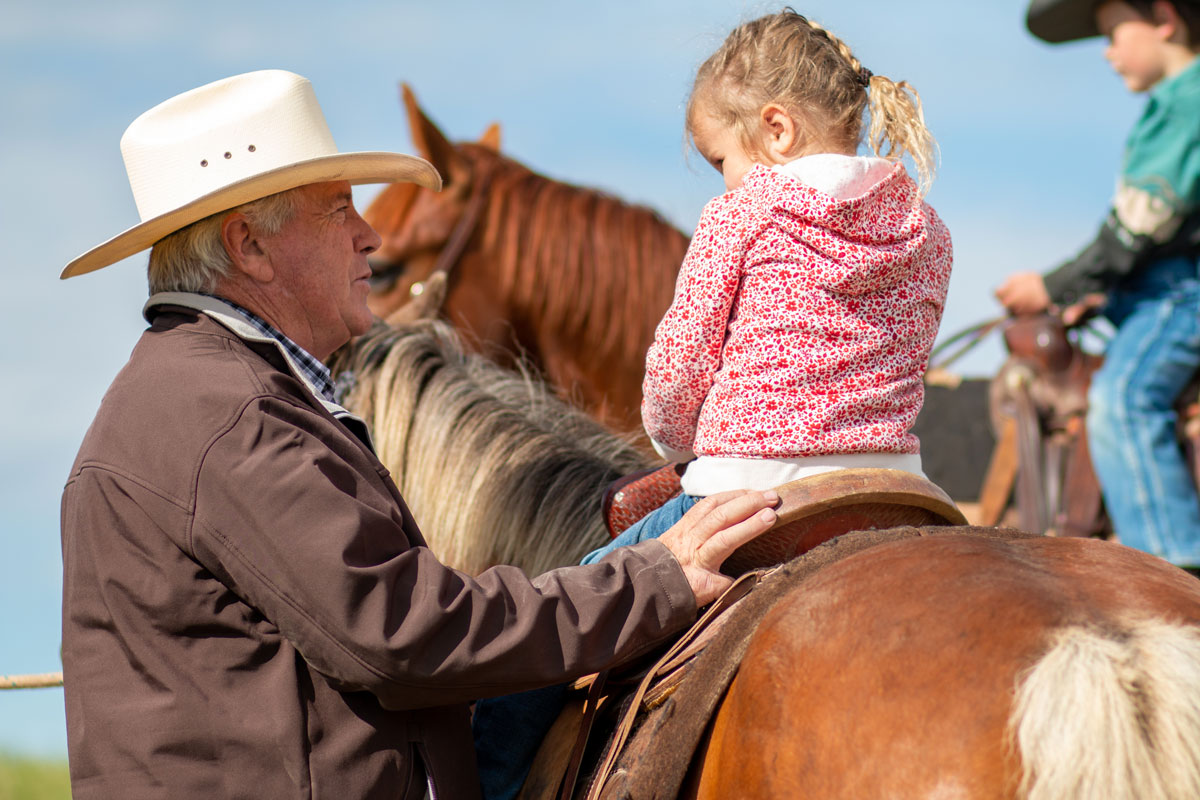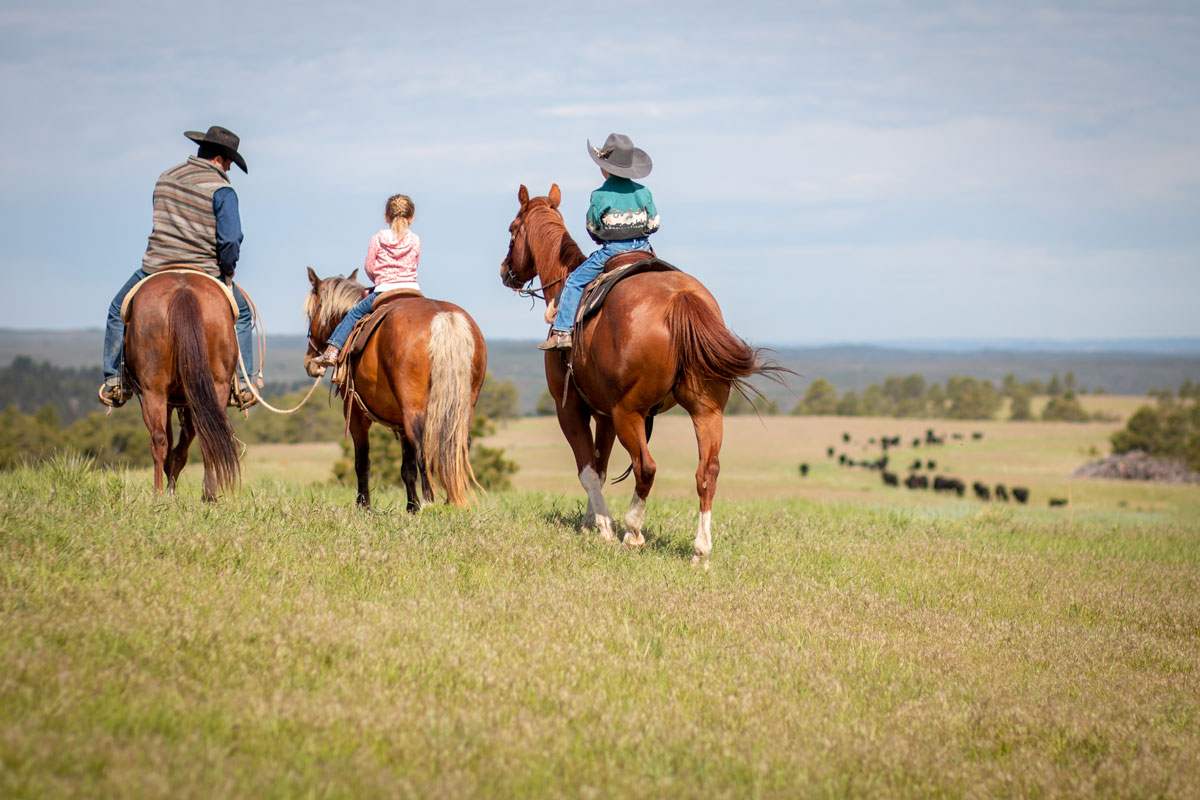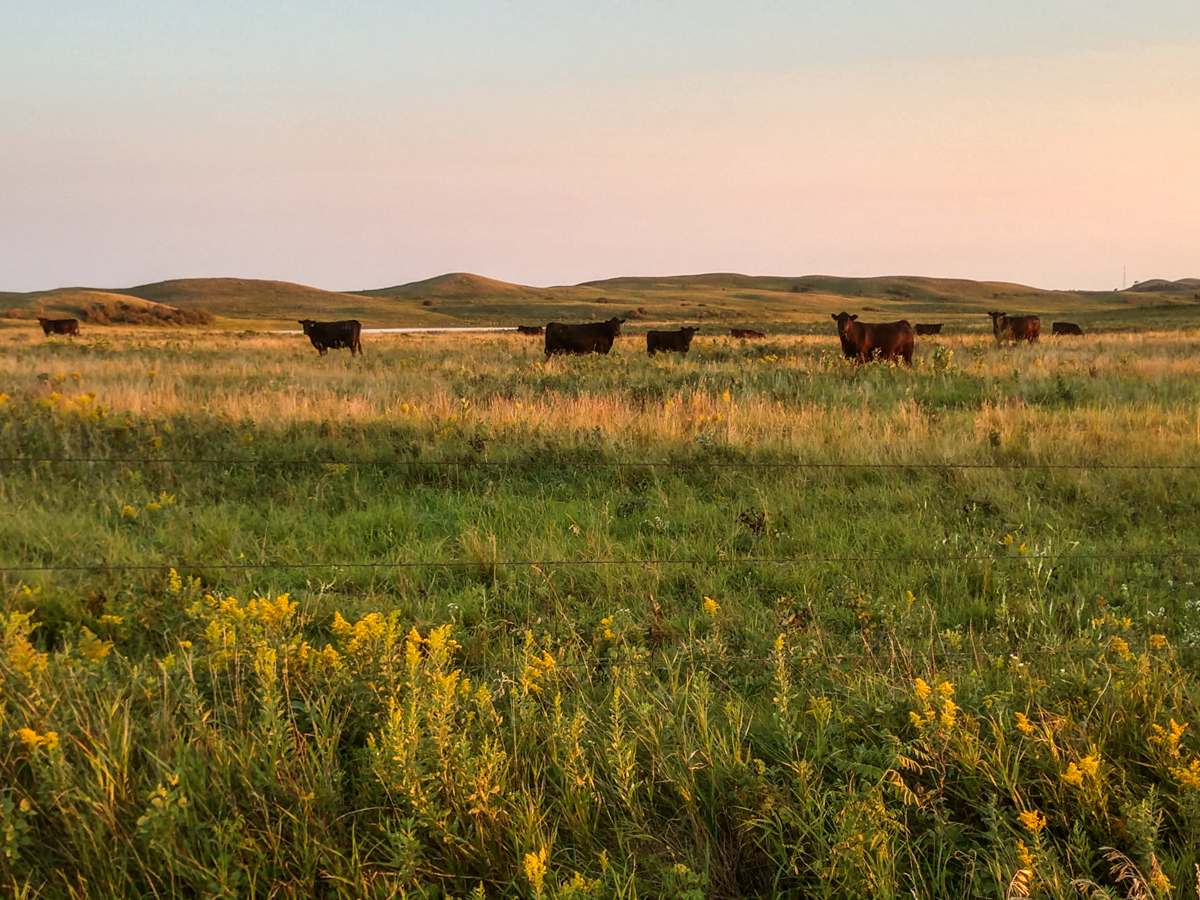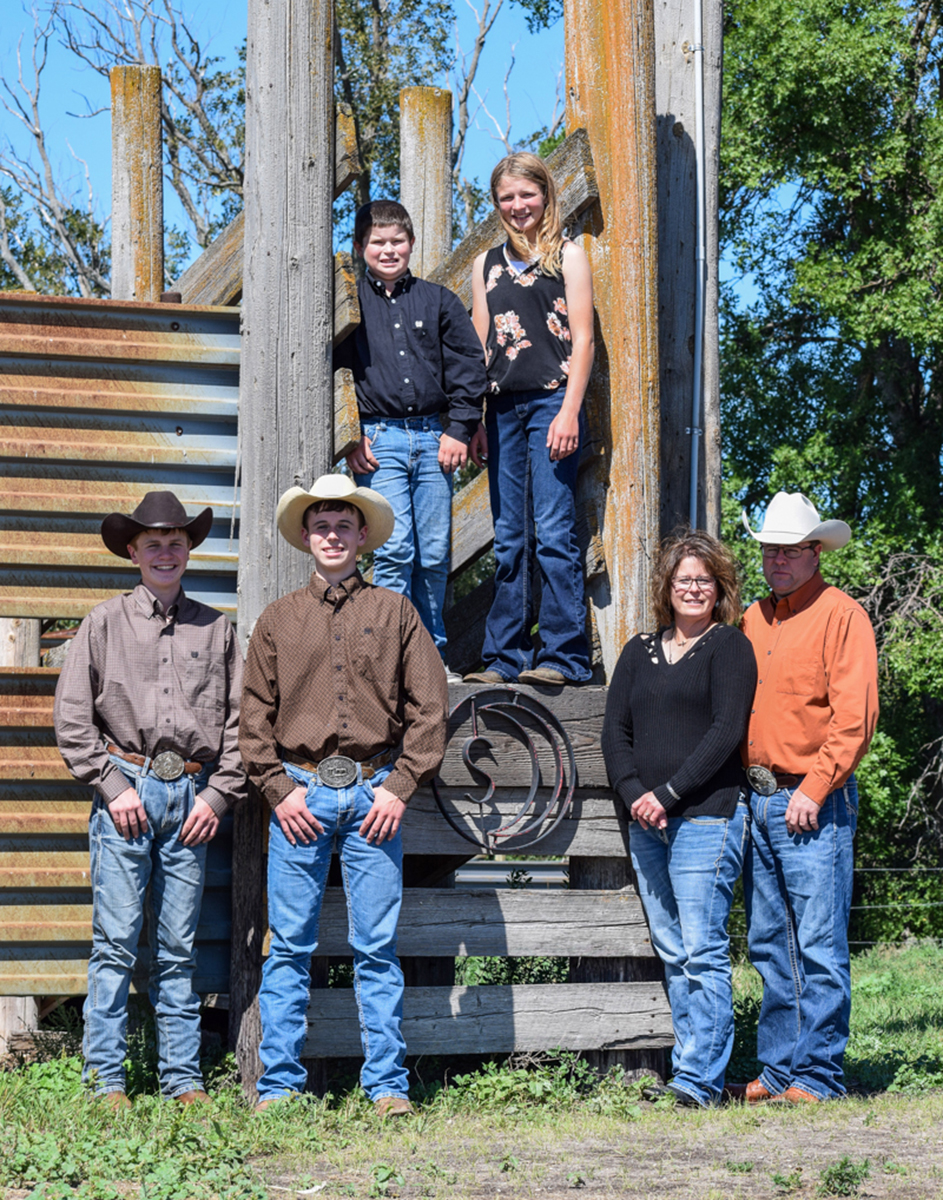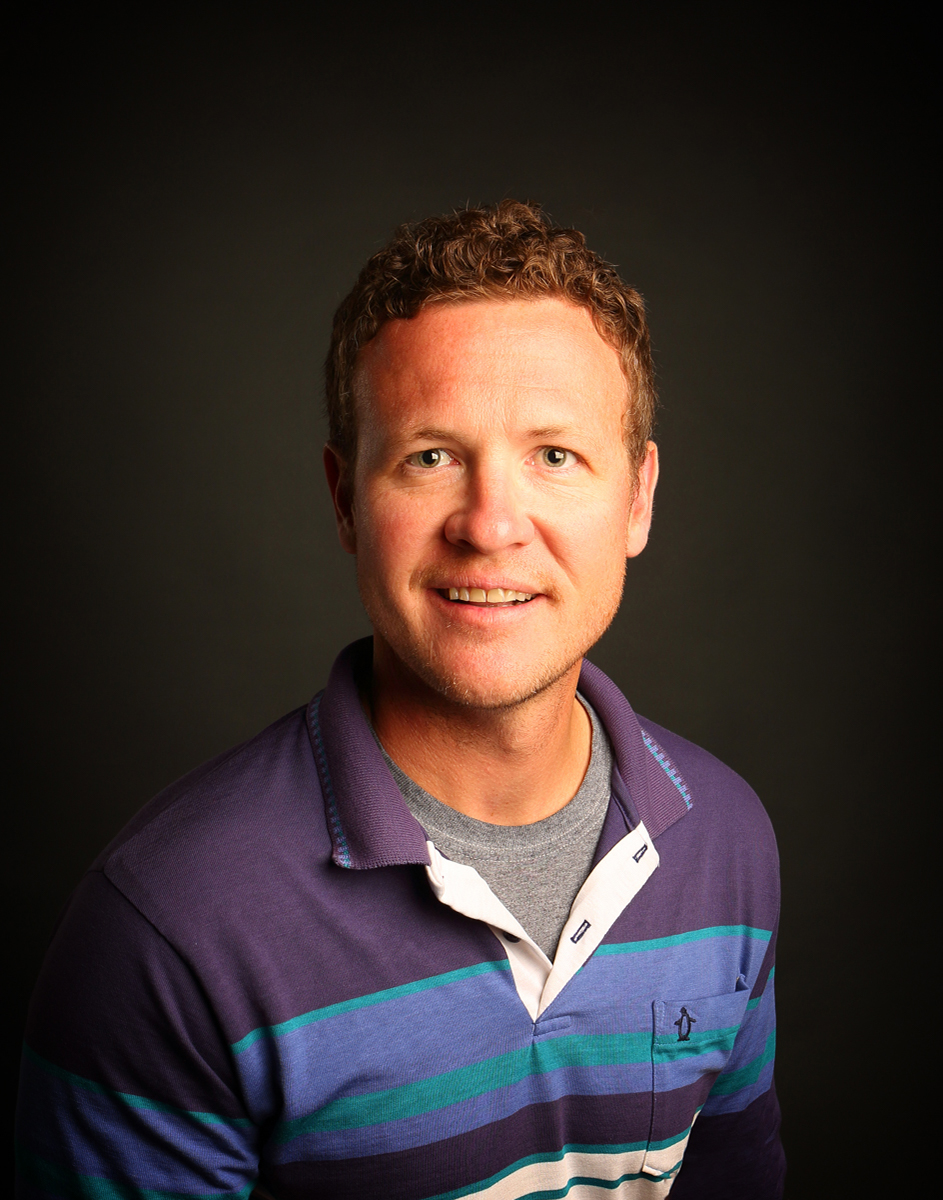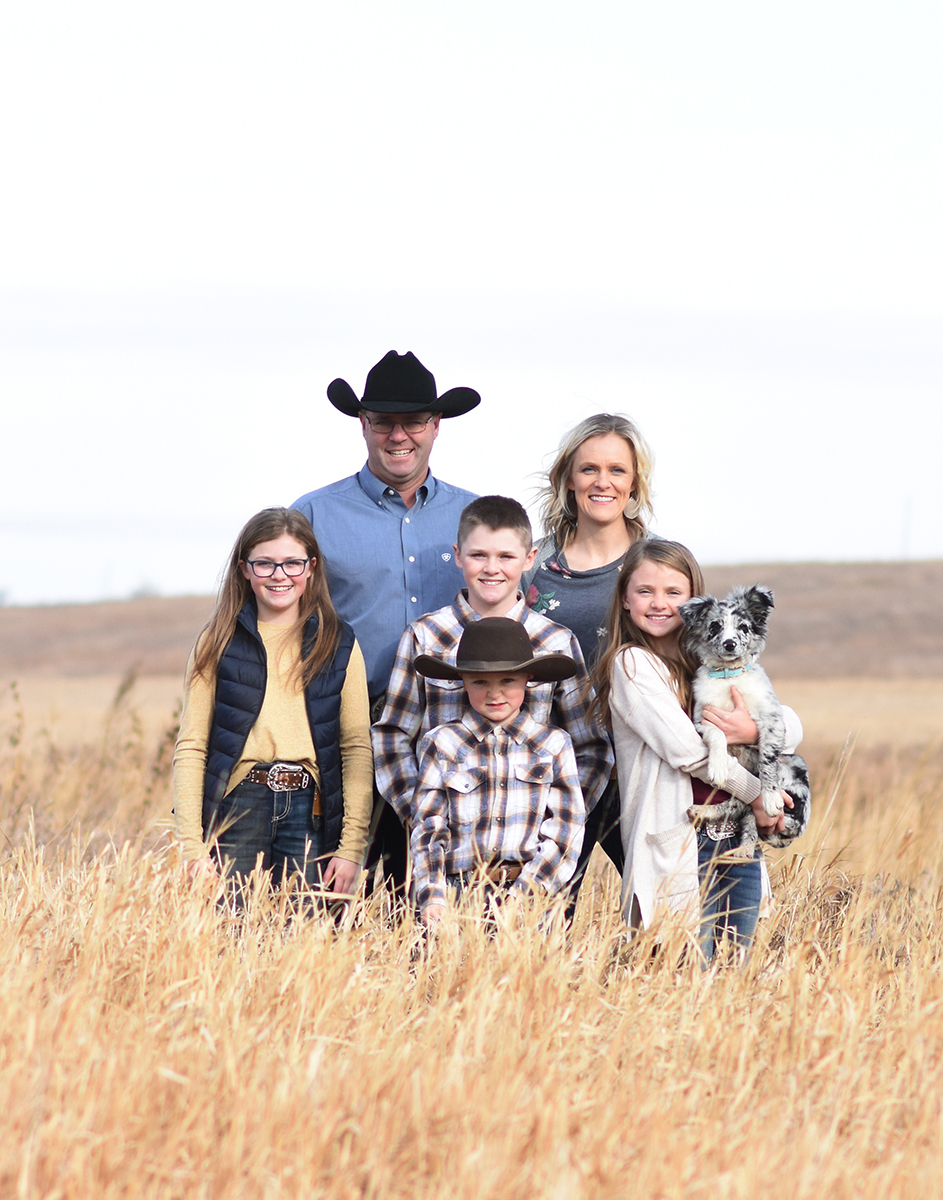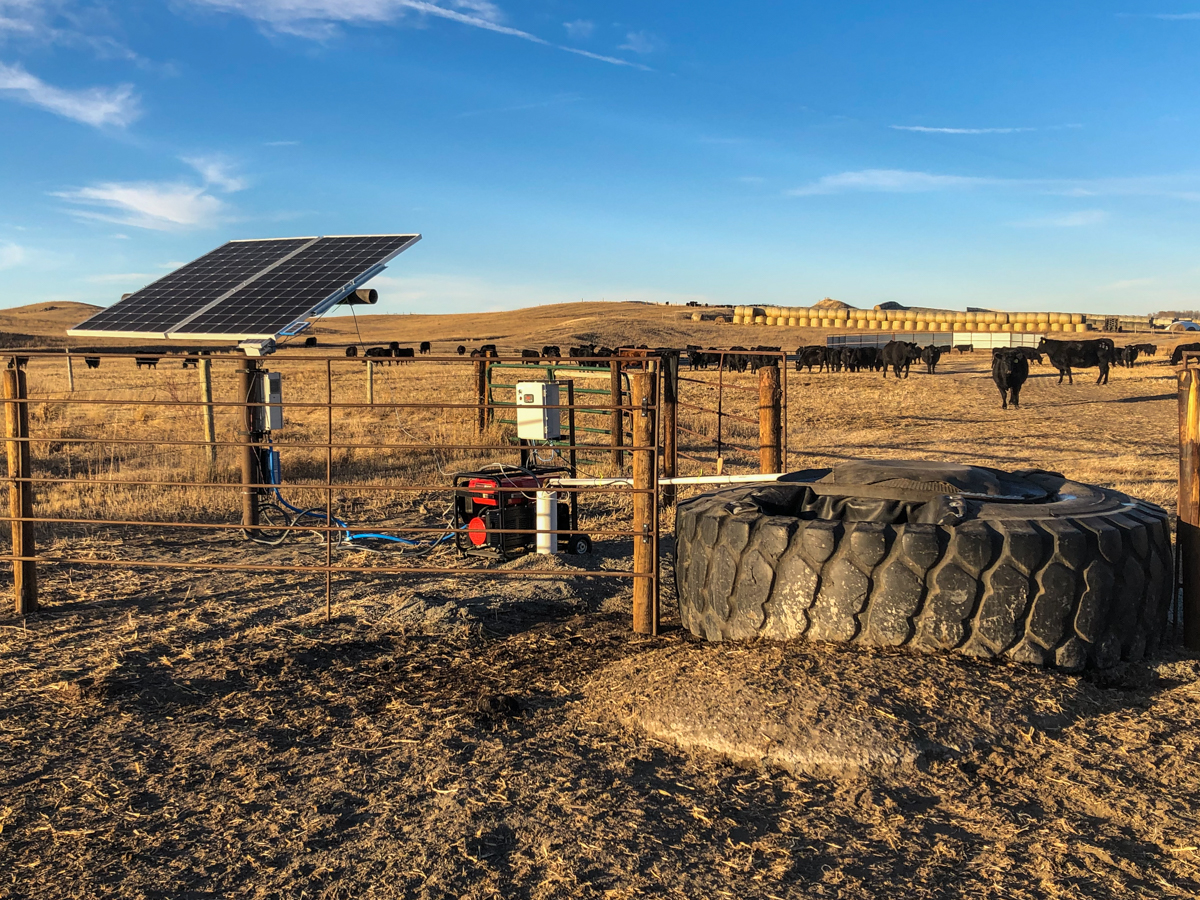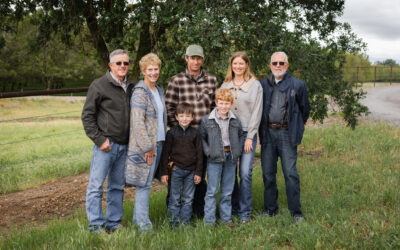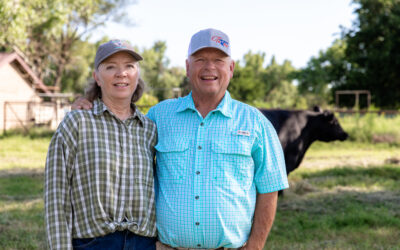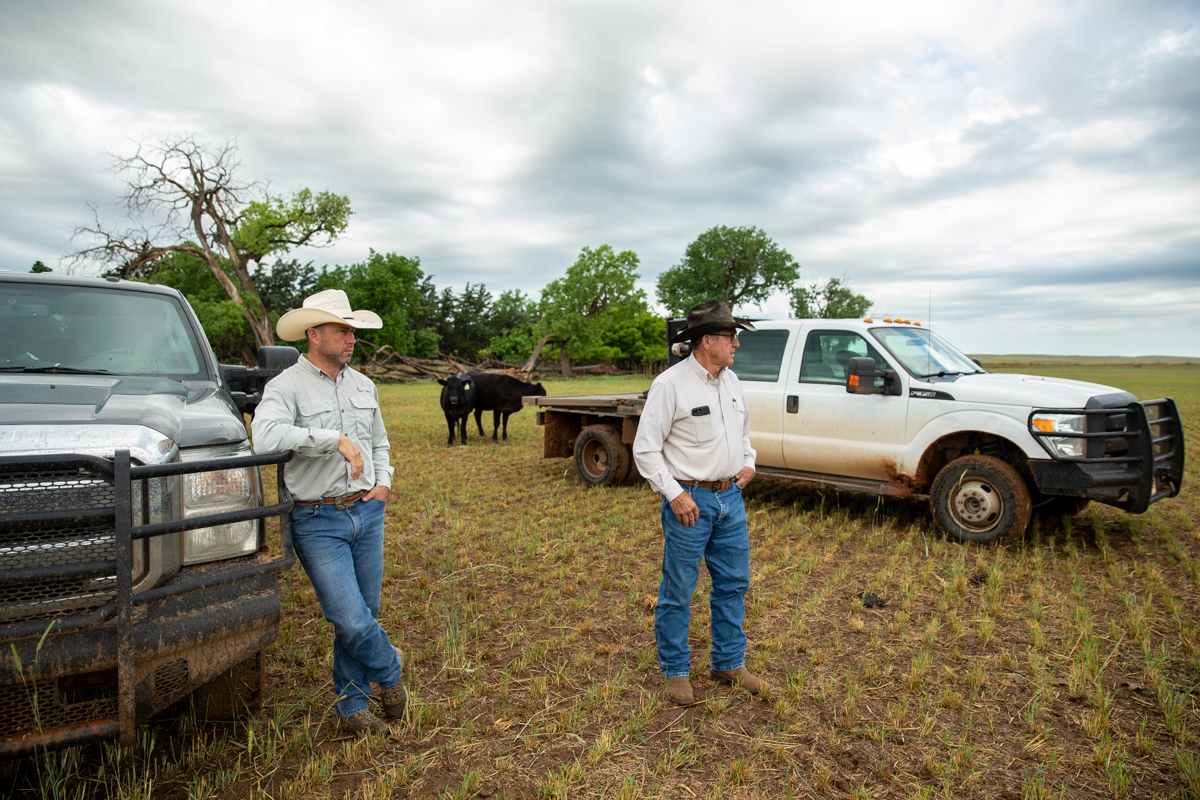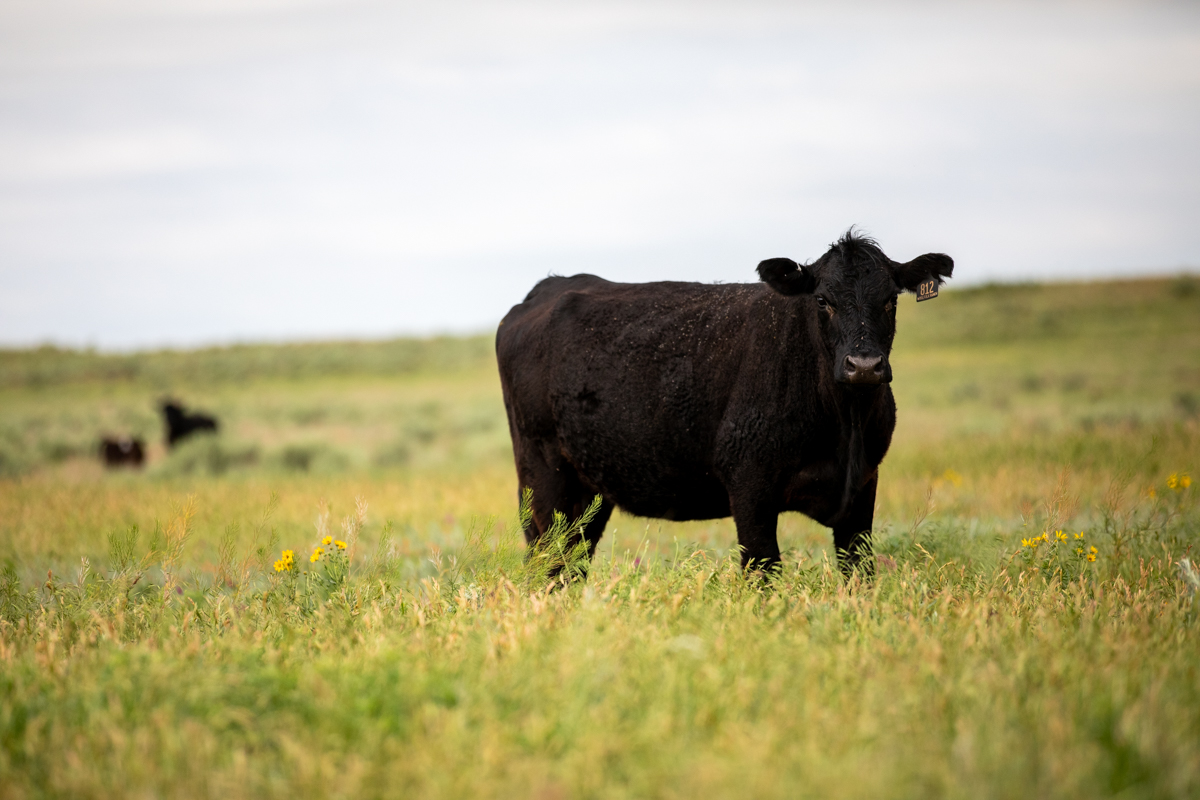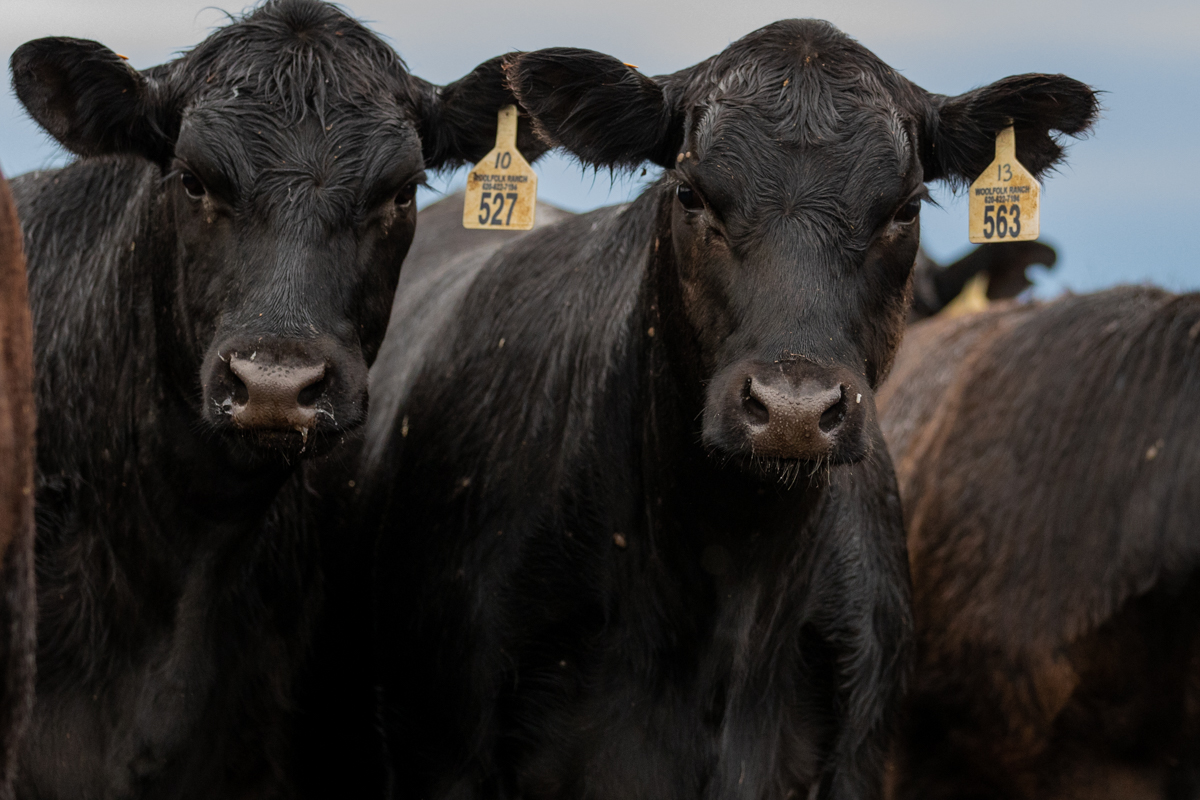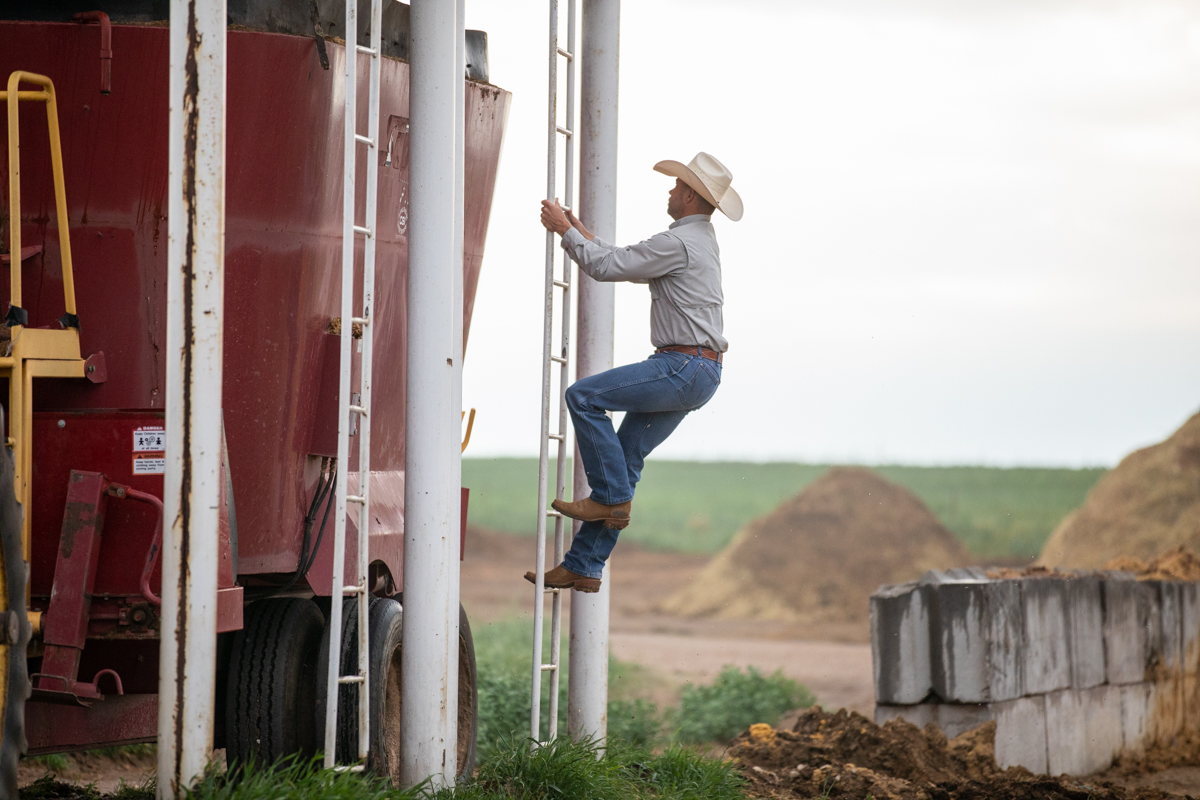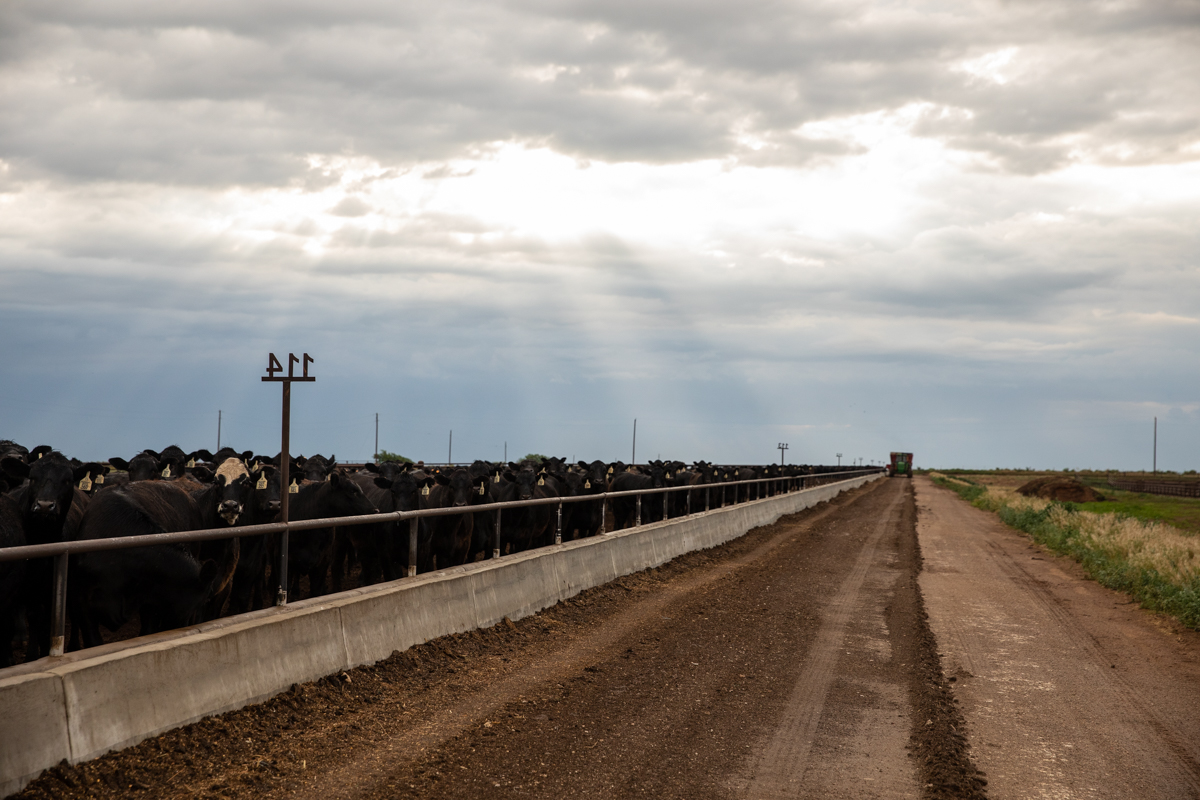
Walt Family Earns Certified Angus Beef Commercial Award
Pursuing premiums takes honest, hard-work for Kansas rancher and his family.
by Morgan Boecker
September 2024
Brian Walt works smart.
The commercial Angus rancher from Collyer, Kansas, came back for daily homework in 1999 after a year at college. For 25 years now, he’s studied all the ways to grow his family’s W6 Cattle cow-calf herd with Angus at the base.
“He studies the data; decisions aren’t made on a whim,” says Dominic Stephens, manager and part-owner of Beef Belt feedyard, Scott City, Kansas. “Brian has a very structured program. Nine years ago, he started feeding his calves at my yard and got a taste for higher premiums. Economics drive his program.”
Guided by data, Walt worked to improve the herd from zero Primes to averaging 60 percent. While some are content with matching the national Certified Angus Beef (CAB) average of 35 to 40 percent, today he regularly sees 85 to 90 percent CAB and Prime in his carcass data.
Learning what drives premiums prompted improvement.

Caption: (l to r) Aceton, Quitin, Brian, Jana, Madison and Keaton Walt
After the Primes
In 2008, after breeding with registered Angus bulls for four years, Walt dipped his toe in retained ownership. The first year it was 25 percent, the next year twice that and by year three he was all in.
“Until I finished cattle, I don’t think I understood what it took to be profitable in this industry,” he says.
After five years, loads were grading 85 to 90 percent Choice but grade had plateaued. Unsatisfied, he looked for ways to improve quality and profitability.
“I started researching different seedstock producers and kept coming back to Gardiner Angus Ranch,” Walt says. “I was drawn to them because of all the data they provided and the information I found on marbling and its heritability.”
Results came with his first calf crop from Gardiner genetics and continued to improve. Today, he expects 60 percent Primes in a load. Next year, he anticipates more.
“Our goal is to reach 100 percent Prime, have the best cattle we possibly can and always feed the best,” says his son Quintin Walt.
Selection for profitability means looking at tangible metrics: growth, performance, pounds and quality. But there is one Walt insists is even more critical.
“One of the most important traits people leave out is the consumer,” he says. “The quality of the product that we’re producing needs to be what they want. If the consumer isn’t willing to pay a premium for it, we’re not where we need to be.”

Faster Change
When carcass data arrives, Walt gets to work. Progress with fed cattle was fast, but it started with the right foundation.
“I want the same maternal traits as everyone else,” he says. “I want that cow to be a good female, easy fleshing and breed back, but I want a premium on the other side of it. I don’t think she can be a really good female unless she can also produce a Prime carcass.”
From breeding season, it’s at least two years before knowing if you made the right decisions for genetic progress based on carcass data or replacement heifers getting bred. DNA testing speeds that up by more than half. Phenotype and structure matter, but Walt’s priority is keeping the freshest genetics in his herd. That’s why DNA tests determine replacement heifer selection.
“I’ve seen the progress we’ve made from it in a short amount of time,” he says, noting the return on investment.
His goals are clear, and he’s figured out how to hit his target.
“The quality is bred into them,” Stephens says. It’s up to the Walts and Beef Belt to manage the cattle in a way to reach their full genetic potential.
For their unwavering and successful quest to improve carcass quality while maintaining a strong maternal base, W6 Cattle was presented the 2024 CAB Commercial Commitment to Excellence Award at the brand’s Annual Conference in Verona, New York, in September.

Management Matters
“It doesn’t matter how hard you feed them, if those cattle aren’t genetically capable of hitting high Choice, Prime or Certified Angus Beef, they just won’t,” Walt says from years of feeding cattle from across the U.S.
Still, he carefully manages his own calves to allow them to achieve their genetic potential.
When calves are weaned, they’re backgrounded for at least 90 days. The first 30 days to let them settle in, then the feed ration changes to push daily gains to 2.5 pounds. Heifers are fed for slower growth to prepare them as replacements, but any that don’t make the cut after DNA tests are fed out with the steers.
“Brian ships me a 900- to 950-weight animal,” Stephens says. “His approach improves their health, and if you don’t have health issues, you can get better performance on feed.”
Looking at the W6 calves, Stephens sees them exceed 4 pounds a day in the feedyard.
Not only does nutrition help reach high-quality grades, but Walt’s seen better vigor from calves on a good mineral supplement.
Enjoy What You Do
Hard work isn’t reserved for sweaty brows and long days laboring to complete tasks. Sometimes the hardest work is being efficient, so you have time to make it to your daughter’s ballgame. Or deciding which direction to take your herd to improve profitability so your son has the opportunity to return to the ranch. The Walts have achieved both.
“I hope our kids learn from Brian and I that it always takes hard work,” says wife Jana. “You should never be satisfied in what you’re doing. Always look to improve and grow in whatever they choose to do.”
And enjoy what you do.
“Brian is probably the one person I know who loves to go to work,” she says. “He loves to get out there with his cows and find ways to get better.”
This story was originally published in the Angus Journal and Angus Beef Bulletin.
You may also like
Success, Despite Challenges
Today’s market is complex and competitive. The collective effort of stakeholders across the supply chain positions Certified Angus Beef to meet the record demand for premium beef moving forward. Signals across the beef industry are clear and Angus farmers and ranchers seeking high-quality genetics that deliver premium beef are producing a product in high demand.
Maplecrest Farms Receives Certified Angus Beef Ambassador Award
Maplecrest Farms bridges every step of the beef supply chain, from raising Angus seedstock to managing a retail meat store and hosting food industry partners. Their ability to connect ranching, genetics and consumer engagement earned them the 2025 CAB Ambassador Award.
Means Ranch Company Earns Certified Angus Beef Sustainability Award
Four generations of the Means family built a legacy through sustainable grazing, water conservation and careful selection of Angus genetics for their south Texas environment. Their stewardship earned the 2025 CAB Sustainability Award.


